#we are a serious show about aliens taking over in the 1960s
Explore tagged Tumblr posts
Text


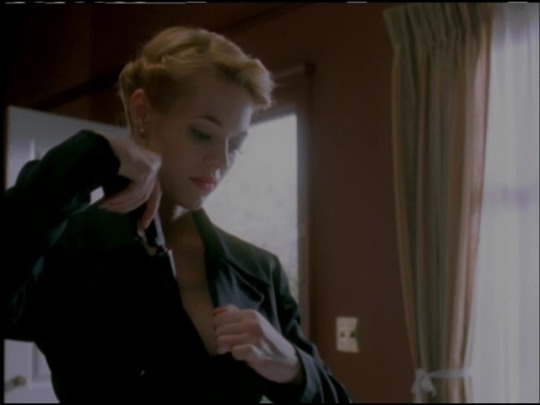
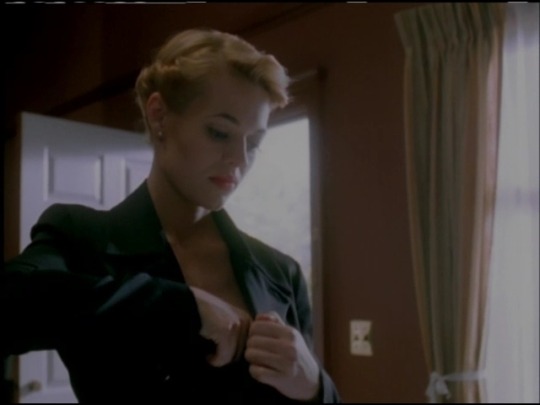
ah the silenced pistol between the boobs, garak you taking notes?
#we are a serious show about aliens taking over in the 1960s#Dark Skies#Dark Skies 1996#The Warren Omission#Jeri Ryan#Dark Skies Rewatch#Danny watches Trek Related Junk
24 notes
·
View notes
Text
Vintage Shows to Watch While You Wait for the Next Episode of WandaVision - The 60s
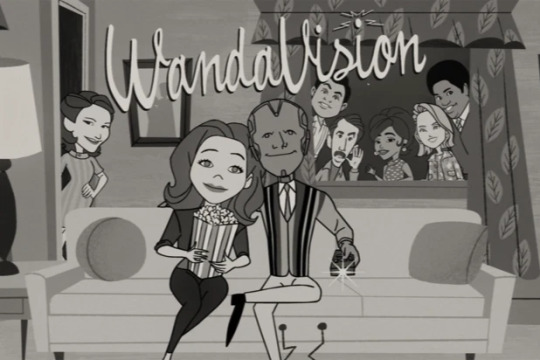
So the 60s is the era that Wandavision pulls most heavily from for it’s inspiration. So much so that one could make the argument that each of the first three episodes are all set in the 1960s. Episode one pulls from the early 60s with multiple Dick Van Dyke refences, episode two is very Bewitched inspired, and episode three is aesthetically very similar to The Brady Bunch which started in ‘69. As such it was hard to narrow down the list for this decade and I had to get creative in some ways.
1. The Andy Griffith Show (1960 - 1968)

The Andy Griffith Show gets kind of a bad rap now a days for being, supposedly, a conservative’s wet dream. People claiming it as such have apparently never actually seen the series. Oh yes, it’s very much set in white rural 60s America and will occasionally present the obliviously outdated joke, but the story of a widowed sheriff being the only sane man in a small town full of lovable lunatics, who prefers to solve his and others problems with negotiation and hair brained schemes as opposed to violence has far more in common with modern day Steven Universe than whatever genocidal fantasy fake rednecks have in their heads.
As the gif above shows Andy Griffith was very subtlety progressive for its time. Andy was a stanch pacifist, pro-gun control, treated drug addicts and prisoners with respect, and all the women he would date had careers, ect. and so on. It’s not a satire making any sort of grand political statements but the series had a moral center that was far more left than many realize.
But if it’s not a satire, then what type of comedy is it?
The Andy Griffith Show excels in what I like to call, ‘awkward comedy’. See everyone in Mayberry is far too nice to just come out and tell a character they’re making an ass of themselves, so therefore whoever is the idiot punching bag of the episode’s focus must slowly unravel as everyone looks on in helpless pity until said character realizes the folly of their ways and the townsfolk come together to make them feel happy and accepted once more. Wandavision takes this polite idyllic awkwardness and plays it up for horror instead of laughs.
2. The Dick Van Dyke Show (1961 - 1966)

The creators of Wandavision actually met with Dick Van Dyke himself to pick his brain and learn how sitcoms were made back then. Paul Bentley also took inspiration from Van Dyke in his performance of the sitcom version of Vision, while Olsen stated Mary Tylor Moore had a heavy influence on her character of Wanda. But more than just being a point of homage, The Dick Van Dyke Show was hugely influential in modernizing the family sitcom and breaking a lot of the unspoken traditions and ‘rules’ of the 50s television era. It’s also just really, really funny.
3.The Alfred Hitchcock Hour (1962 - 1965)
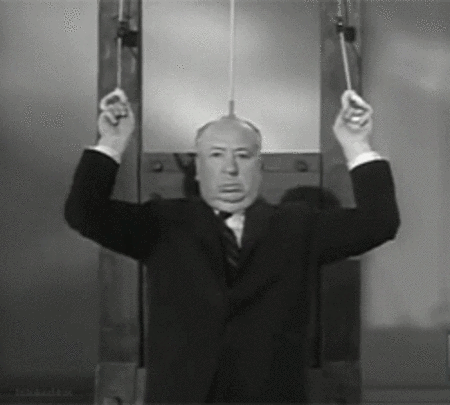
Bit of a cheat here. Alfred Hitchcock Presents actually started in 1955 as a half hour anthology show, but in ‘62 the show got a revamp and was extended into a full hour tv series. I knew I wanted The Twilight Zone to be covered in my episode one recap, but ‘The Master of Suspense’ couldn’t be forgotten. While The Twilight Zone reveled in the surreal and supernatural, Alfred Hitchcock pioneered the thriller genre and made real life seem dangerous, horrifying, and other worldly.
4. Doctor Who (1963 - present day) vs Star Trek (1966 - present day)

Just like how westerns dominated the air waves during the 50s, science fiction was the center of the cultural zeitgeist of the 60s. From Lost in Space to My Favorite Martian, space aliens and robots were everywhere. So naturally I had to name drop the two sci-fi juggernauts that still air to this today. If you thought that the rivalry between Star Wars and Star Trek was bad then you’ve never seen a chat full of Whovians and Trekkies duking it out over who is the better monster, the Borg or the Cyberman. But which one has the more influence over Wandavision?
Well Star Trek owes it’s existence to sitcoms. As with The Twilight Zone before it, Star Trek was produced by Desilu Productions and it’s co-founder and CEO, Lucille Ball, was the series biggest supporter behind the scenes, lobbying for it when it faced early cancelation. As with all things sitcomy, everything ties back to I Love Lucy in the end. However despite that little backstory, it would seem that the series has very little to do with Wandavision itself beyond being quintessentially American.
I would argue that Wandavision owes much to Doctor Who though. Arguably more so than any show mentioned in this retrospective. Time travel, alternate realities, trouble in quite suburbia, brainwashing, people coming back from the dead, ect... just about every trope you can find in Wandavision has also appeared in Doctor Who at some point. As a series that can go anywhere and do anything, Doctor Who was a pioneer of marrying genres in new and interesting ways.
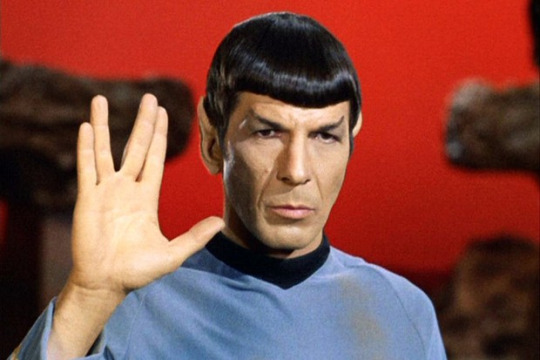
5. Bewitched (1964 - 1972) and I Dream of Jeannie (1965 - 1970)

It’s hard to pick one series over another because they’re essentially the same show. A mortal man falls in love with a magical girl who upends their lives with magic filled hijinks as they try their best not to have their secret discovered by the rest of the world. And both have their fingerprints all over the DNA of Wandavision.
There’s only two core differences; Samantha and Jeannie have completely different personalities, with Sam being confident and knowledgeable and Jeannie being naïve and oblivious, along with their relationships with their respective men, Sam and Darrin being married and in love at the start of the series and Jeannie chasing after Tony in the beginning in a will they/won’t they affair, finally only getting together in the last season.
6. The Munsters (1964 - 1966) vs The Adams Family (1964 - 1966)

Fans of these two shows are forever sadden that there never was a crossover between them. Because they’d fit perfectly together. Both shows are about a surreal and macabre family living in American suburbia and disrupting the lives of their neighbors with their otherworldly hijinks. Sound familiar?
The main difference between the two shows is the way the characters viewed their placement in the world they inhabit.
The Munsters were always oblivious to the fact that didn’t fit in. They just automatically assumed everyone had the same personal tastes as them. Whenever they encountered anyone who behaved strangely around them they would write that person off as being the odd one rather than questioning themselves. As such the main cast was structured like a stereotypical sitcom family who just happened to be classic movie monsters.
The Addams were well aware that they were abnormal and they loved it! They lived life with in their own little world and didn’t care what anyone thought of them. As such the characters were far more colorful and quirky as individuals but there was little in the way of refences to other horror franchises beyond just a general love of the twisted and strange.
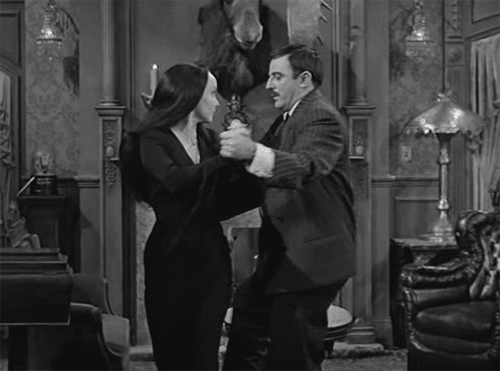
7. Green Acres (1965 - 1971) and the Rual-verse (1962 - 1971)

So the MCU is not the first franchise to bring viewers an interconnected universe to the small screen. Far from it, as sitcoms had been doing this for decades, starting with the ‘rualverse’. Beverly Hillbillies, Petticoat Junction, and Green Acres were all produced by the same company and were treated as spinoffs of each other, complete with crossovers and shared characters and sets.
Of the three, the last show, Green Acres, has the most in common with Wandavision. A well to do businessman and his lovely socialite wife settle down in small town America on a farm in order to get away from the stresses of city life, only to find new stresses in the country. Eva Gabor, herself a natural Hungarian, plays the character of Lisa as Hungarian making her one of the few non-native born Americans on tv screens during the cold war. Despite her posh nature and original protests to the move, Lisa assimilates to the rural life far easier than her husband, Oliver. Who, as the main comedic thread, can’t comprehend his new quirky neighbors’ odd and often illogical behavior.

8. Hogan’s Heroes (1965 - 1971) and Get Smart (1965 - 1969)

So as comic fans have been quick to point out, it’s looking like both A.I.M. (Hydra) and Sword (Shield) will be players in the story of Wandavision. To commemorate that here’s two shows to represent those opposing sides. Although in truth, neither series has anything else in common with each other but I need to condense things down someway.
In Hydra’s corner we got Hogan’s Heroes. A show all about taking down Nazis from within.
I love, love, love, ‘robin hood’ comedies where a group of con artists try week after to week to pull one over the establishment. The Phil Silvers Show, Mchale's Navy, and Top Cat, just to name a few examples are all childhood favorites of mine. However while those shows had a lot of morally ambiguous characters, Hogan’s Heroes has very clear cut good guys and bad guys, cause the bad guys are Nazis and the show relentless makes fun of the third reich as should we all. In fact I was watching Hogan’s Heroes while waiting for the GA run off election results. Fortunately my home state decided to kick out our own brand of Nazis this year.
For Shield, we got the ultimate spy spoof, Get Smart. Starring, Inspector Gadget himself, Don Adams, as the bumbling Maxwell Smart. Get Smart, is a hilarious send up of Cold War espionage but the real selling point of the show, imho, is Max and his co-worker 99′s relationship. You can cut the sexual tension in the air with a knife all while laughing your ass off.
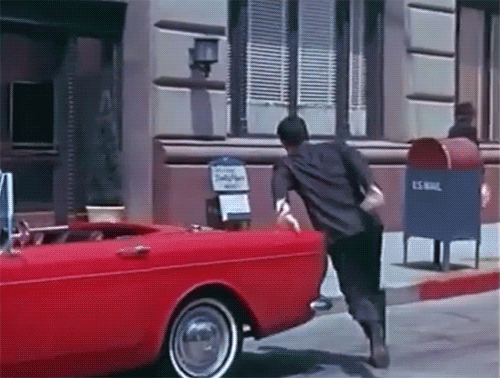
9. Batman (1966 - 1968)
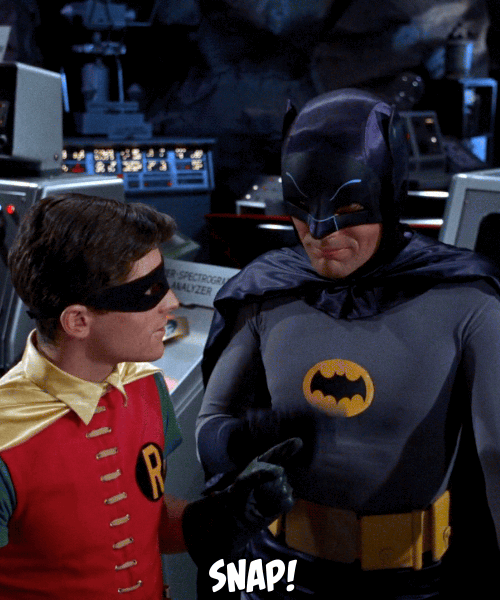
First was Superman and then came Batman. Yet while Superman was a serious action show, Batman was a straight up comedy. Showcasing that superheroes could indeed be funny.
Also shout out for Batman being the only show on this list to have an actual crossover with it’s competitor, The Green Hornet.
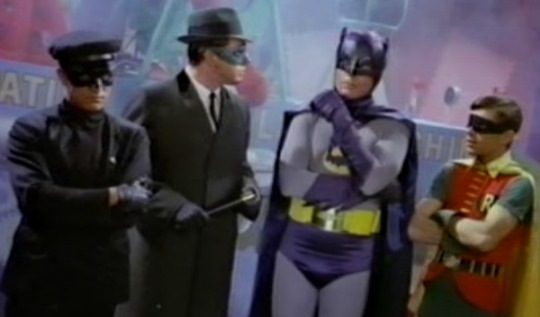
10. Julia (1968 - 1971)

Since episode two features the first appearances of Herb and Monica, let’s highlight the first black led sitcom since the cancelation of Amos ‘n Andy over a decade earlier. The show focuses on single mother and military nurse, Julia, as she tries to live her life without her recently decease husband, who was killed in Vietnam, as she tries to raise their six year old son on her own.
The series is cute. It’s more of a throw back to earlier family sitcoms where there’s no fantasy and life lessons are the name of the game. It’s the fact that the main character is a single black woman is what made the show so subversive and important at the time.
Runner Ups
There’s much good stuff in the 60s, so here’s some others that didn’t make the cut but I would recommend anyways.
Car 54, Where Are You? (1961 - 1963)
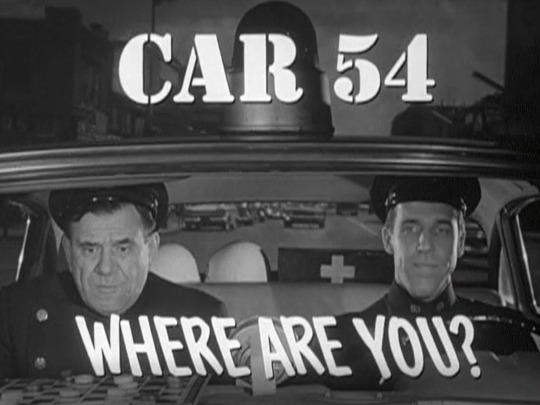
I call this the Brooklynn 99 of the 1960s. Bumbling but well meaning Officer Toody longs to do good in the world and help anyone in need, but often screws things up with his ill thought out schemes. He often drags his best friend and partner, the competent but anxiety riddled, Muldoon into his escapades.
Mr. Ed (1961 - 1966)
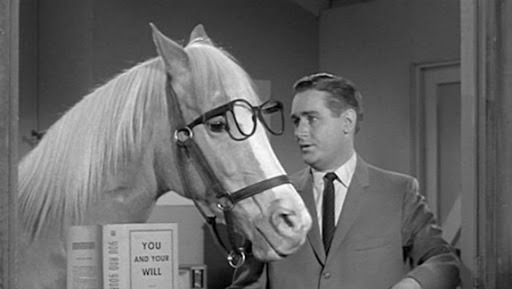
The grandfather of the sarcastic talking pet trope.
The Jetsons (1962 - 1963 and 1985 - 1987)
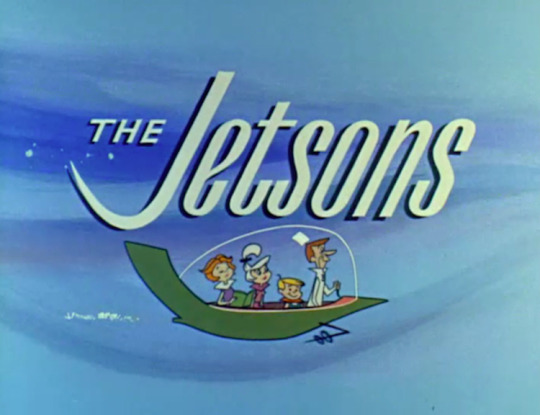
Hanna-Barbera often took popular sitcoms and just repackaged them as cartoons with a fantasy theme to them. The Jetsons has no singular show that it rips-off but is rather more a grab bag of sitcom tropes that feature, robots, computers, and flying cars.
The Outer Limits (1963 - 1965)

The Outer Limits was The Twilight Zone’s biggest competitor in terms of being a sic-fi/horror anthology series.
Gillian’s Island (1964 - 1967)
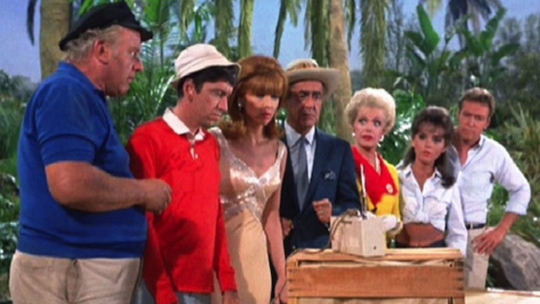
The only comparison to WandaVision I could think of was that this is a sitcom about people being trapped in one place. But by that point I was running out of room on the list. Still it’s one of the funniest shows on here.
So yeah, this took longer than expected cause there’s a lot, here. Hopefully the 70s will be easier. Which I’ll post on Friday.
114 notes
·
View notes
Photo

The Ship of Monsters
Check me out, I’m being topical! I had another review almost finished for today, but when I saw the news I knew I had to set that aside and find a movie about life on Venus. This one is a ridiculous Mexican film starring Lorena Velazquez from Samson vs the Vampire Women (looking only slightly less like Cher) and one of those amazing cardboard robots you only get in the very worst of late 50’s and early 60’s sci-fi.
An atomic war on the planet Venus has killed off all the males, so an expedition is sent out in search of replacements, consisting of a native Venusian named Gamma, her Uranian navigator Beta, and their robot Tor. After promising the Empress that they will bring back only the most manly of men, they wander the solar system a while collecting creatures with penises before an engine problem forces them to land on Earth. The first human they meet there is Laureano Gomez, a singing cowboy with a well-earned reputation for telling tall tales. One might assume one could predict the rest of the movie from there… but then Beta turns on Gamma and reveals that her true mission all along was to conquer a planet to feed the vampires of Uranus!
I gotta say… I did not see that coming.

The Ship of Monsters is supposed to be a comedy. It’s seldom funny when it’s trying to be, although it mercifully avoids being the kind of desperately unfunny a lot of bad comedies are… possibly this is because it’s in Spanish, and by the time I’ve realized something is stupid there’s another subtitle to distract me. The jokes, such as they are, are pretty standard. Tor the robot was created by an alien race, who were aware of Earth but never bothered exploring it because they thought the inhabitants weren’t very intelligent. Laureano is in the habit of telling ridiculous stories to his drinking buddies, so of course when he claims the Earth is being invaded by space monsters they don’t believe him. That sort of thing. The movie is much funnier when it’s just showing us absurd situations, but to nobody’s surprise, The Ship of Monsters is at its funniest when it’s trying to be serious.
This hilarity comes in many forms, covering just about all the possible bases for a dirt-cheap 1960 sci-fi film. We have spaceship sets made of cardboard, covered with buttons that don’t actually press and levers conveniently placed so people can bump into them during fight scenes. We have Tor, with his tin can body that’s always a little dinged up but never in the same places, giving us clues as to what order the scenes might have been shot in. He also has wiggly spring antennae and makes a little whirring noise every time he moves. We have space babes in silver bathing suits and glittery high heels. Vampire-Beta, sporting plastic fangs that look like they came from the bottom of a cereal box, could be the female counterpart to the guy from Dracula vs Frankenstein, and the puppet used to represent her in flight is nearly as bad as the one from The Devil Bat.
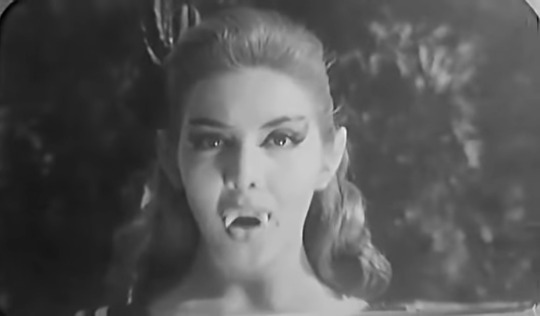
The ‘monsters’ of the title are a bulging-brained Martian prince, a scaly cyclops, a spidery creature with venomous fangs, and the mobile skeleton of what appears to be a *damn worwelf (he tells us that his race has Evolved Beyond Flesh... apparently not Beyond Bones, though). The costumes are all terrible, particularly the warwulf puppet, whose backbone extends into his mouth and who has to be carried around with his feet dangling in any shot that’s not a close-up. It’s nice, though, that a little imagination went into them, and somebody gave a bit of thought to the idea that a monstrous appearance is relative. The Martian tells Beta that he admires her ambition and might even marry her if she weren’t so ugly by his planet’s standards.
At the end, naturally, this alien invasion is defeated by Laureano, his twelve-year-old brother, and a cardboard robot, while Gamma just stands around and screams. With a movie like this I expect nothing less. The denouement contains my favourite intentional joke in the whole thing, in which Gamma stays on Earth with her True Love, and Tor the robot takes his, the Jukebox, back to Venus with him! Tom Servo would have given a speech to congratulate the happy couple, and I can just see him breaking down into happy tears before he got five lines in.
(The wirwalf skeleton is not present at the climactic fight, by the way… no explanation is offered, and I strongly suspect that they broke the puppet trying. I rather enjoy this omission, because it lets me imagine him getting lost or maybe buried by an enterprising dog, and finally finding his way back to the landing site only to learn that they’ve left without him.)
I called Laureano a cowboy but he only has one cow. Her name is Lolobrijida and she is the very first time I have ever seen a movie spur a hero into action by killing his cow. She gets a proper Teenagers from Outer Space death, with her skeleton left behind propped up by metal struts like a dinosaur in a museum!
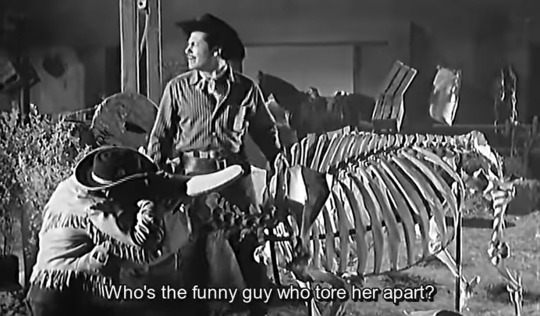
I also called him a singing cowboy, which he is – there are several songs, including one in which he tries to explain to Gamma and Beta what ‘love’ means. The songs have pleasant but forgettable Mexican pop melodies, and none of the lyrics make a whole lot of sense. Being translated over-literally from Spanish probably didn’t do them any favours (my own Spanish tops out at yo no tengo dinero), but I still can’t imagine that the What Is Love song clarified anything.
Laureano himself comes across as kind of a fool, but he’s not actually a full-on idiot, which is quite important. If he were the kind of one-dimensional ‘comedic nitwit’ embodied in characters like Dropo, or the janitor from Reptilicus, he’d be insufferable. Laureano is no genius, but he’s got personality traits besides being stupid – he cares deeply for his little brother Chuy and for his animals, and he doesn’t treat Gamma and Beta’s appearance as two women for the price of one. Very quickly he decides that Gamma is the one he loves, and he sticks to that, doing his best to let Beta down gently even when she offers to make him a king. He’s also smart enough to trick Beta into dancing with him so he can steal the device she uses to control the rocket and Tor, and to listen to Gamma when she tells him about the various monsters’ weaknesses.
Gamma and Beta, on the other hand, don’t have a lot to them besides the basic fact that Gamma is the Nice One and Beta is Evil. Gamma starts out in the story with a strong sense of duty, and it’s a bit disappointing to see her abandon that because of Tru Luv. I would have liked the ending better if she’d taken Laureano home with her so that the two of them could be the Adam and Eve of the new Venusian race. Meanwhile, Beta shows no sign of any loyalty except to herself and her own ambition. Her original mission, to secure Earth as a blood supply for the Uranians, falls by the wayside as she decides she’s going to conquer and rule the planet herself.
So The Ship of Monsters isn’t exactly a feminist manifesto, but neither is it complete misogynistic garbage like Project Moon Base. The whole premise, after all, rests on a planet of women being able to develop space travel all on their own! This is a fairly surprising plot point, because in many ‘planet of women’ movies like Fire Maidens of Outer Space or Cat Women of the Moon, the ladies need the virile Earth Men to come to them.

There’s also a little bit of actual science peeking out of the cracks. The moment for launch of the rocket from Venus is determined by when ‘the elliptical orbits coincide’. Launch timing is, indeed, a delicate art depending very much on what’s orbiting where. There’s also the moment when, trying to land on Earth, Gamma and Beta worry that the friction, combined with our oxygen-rich atmosphere, will set their ship on fire. This stuff is pretty impressive coming from a time when the moon landing was still nearly a decade away. There are even a couple of scenes in zero gravity that honestly aren’t totally terrible. I mean, I’ve seen better, but I’ve also seen much, much worse.
There’s also one weirdly prescient moment when Laureano, telling one of his silly stories in the pub, describes being surrounded by dinosaurs – only to get a laugh a moment later when he mentions that they had beautiful plumage. I’m not sure whether this is meant to be a joke in that Laureano is exaggerating an actual encounter with an angry bird into something more fearsome (I think we’re to assume that the whole story is totally made up), or whether it’s just supposed to be funny that Laureano thinks dinosaurs had feathers instead of scales. Either way, it’s the equivalent of the moon Fornax in Menace from Outer Space being so reminiscent of Io. There’s no way the writers could have known that, but it’s interesting nonetheless.
The Ship of Monsters is very cheap and very dumb, but it’s good fun for those of us who like crummy old alien invasion movies, and I recommend it to anybody in that demographic. As for actual life on Venus… I feel like a lot of the people getting excited are too young to remember when Bill Clinton told the world that we had totally found life on Mars. Humans have been discovering life on other planets for about two hundred years and every single one of those ‘discoveries’ has turned out to be either a mistake or an outright lie. We have plenty enough to panic about this year without a Venusian invasion.
#mst3k#reviews#episodes that never were#the ship of monsters#cows in fridges#60s#tobor is robot spelled backwards
24 notes
·
View notes
Link
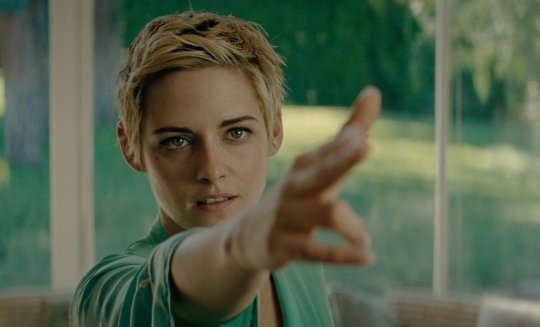
Kristen Stewart is due at the Venice Film Festival tomorrow for the world premiere of “Seberg”, a political thriller inspired by true events and a movie that represents one of the boldest choices the erstwhile Bella Swan has increasingly made since she burst to worldwide stardom in the Twilight saga. Stewart has demonstrated an arthouse sensibility — even becoming the first American actress to win a César Award, France’s equivalent to the Oscar — showing range in a diverse array of films while not shying away from big studio fare either, with “Charlie’s Angels” coming in November. She is passionate about her work, gender equality and telling “confronting” stories. Stewart is also conscious of the reach and influence she has as a celebrity, particularly one who broke out in a global franchise. “Everything that I do, every conversation that I have, the way that I vote, the projects that I’m drawn to creatively… It would be impossible to go to bed without being really clear and open and honest in these times,” she tells me below. Seberg (which previously went by the title Against All Enemies and is directed by Benedict Andrews) plays into that. The film is centered on Jean Seberg, the titular Breathless pixie, an American actress who spent half her life in France. In the late 1960s, she was targeted by Hoover’s illegal FBI surveillance program COINTELPRO. Because of her political and romantic involvement with civil rights activist Hakim Jamal (played by Anthony Mackie in the film), she was also a target of the FBI’s attempts to disrupt, discredit and expose the Black Power movement. Seberg died at the age of 40 in what was deemed a probable suicide. That was 40 years ago tomorrow. Of the film’s resonance to today, Stewart says, “I mean, this is America and a bunch of dudes in power are never going to be cool with you taking it away.” Bearing a striking physical resemblance to Seberg in the Amazon Studios presentation, Stewart has more in common with the actress than a great haircut. DEADLINE: In some of the acting choices you’ve made in the past few years, there seems to be more of a European sensibility than where you started out. Was it a deliberate choice to go in that direction?
KRISTEN STEWART: Well I started acting when I was really young and I definitely never got any commercial jobs (laughs). As a little kid, the first few things you audition for are commercial work or TV work or parts for children which tend to obviously be a little less complex. I was seriously, like, thrown out of every “cute girl” audition that I ever went to. At that time, there was no way for me to be aware of my sort of ultimate trajectory. But it makes total sense. I was always a very sort of over-serious thoughtful kid. I was definitely not afraid to tell confronting stories and was much more interested in that.
DEADLINE: You worked with Jodie Foster early in your career, how influential has that meeting been later on?
STEWART: I think I grew up with this default admiration because of her, because I always felt a kinship with her. I sort of consistently used her as an example of something to strive for, so that detail was always very attractive. You know, there’s just something classically more existential and realistic in terms of what it feels like to actually live a life and have a brain and live amongst people that might have different ones rather than telling these compact perfect stories. I was always into that. But (working with Foster) was like the coincidence that luckily put me in a few correct places. I definitely kind of aggrandized that whole world before I even knew about it.
DEADLINE: When I first moved to France 26 years ago, I worked at the International Herald Tribune and that famous photo of Jean Seberg from Breathless was a source of pride for us. But I was surprised how little I knew about her life and the circumstances this film reveals. What did you learn about her?
STEWART: I really only knew her as the Herald Tribune girl as well. I hadn’t seen anything other than Breathless. I knew the dégueulasse moment (at the end of that film). I always found her to be iconically cool. I thought it was rad that this actress had been ingratiated into this culture that I also am really interested in, but I really never went into it any further than that. I read the script and was really shocked, I had no idea about the story about her sort of tragic end. I was interested in the complexity of her life, but I only knew her as an image before.
DEADLINE: Beyond being an American actress who has found success in France, were there any other aspects of Jean that you identify with?
STEWART: I think Jean was really committed to telling not the most commercial stories, it was why she was attracted to the people she was attracted to creatively. It was why she was drawn to the causes that she was as well — they weren’t digestible in the country that she was living in, they weren’t something that people wanted to hear both creatively and politically. So I think it makes total sense that she found a more sort of welcome home in France.
DEADLINE: Jean was also a very strong woman, but one who had a tragic end. How would she fare in today’s Hollywood?
STEWART: We’re living in such a polarized time I think, that luckily there are fewer — I mean I can’t justify this because there are some people functioning in order to preserve their careers and not necessarily reflective of how they feel as a human in a compassionate sense or in a political sense — but I do think that people are less afraid in a way because it’s just so pertinent right now. Not that it wasn’t then. We were just out of the 50s; there was more of a cookie-cutter conformist mentality especially in the States and especially for someone who wants to maintain their success. But I think now, I don’t know, Jean currently would probably have more of a crew to substantiate these ideas. I think that now the political climate doesn’t leave much room for middle ground, so I’d like to say she would fare better. I would like to think there wouldn’t be a f***ing oppressive conglomerate out there to destroy her life. But at the same time, that’s absolutely the world that we’re living in. I think it would depend on what she was getting mixed in with. Cautiously optimistically, I would like to say it would be better. But at the same time, the reason it would be is really jarring right now because I think we all feel like there is probably someone over our shoulders ready to take us down if we say the wrong thing.
DEADLINE: There are indeed parallels to today. Sort of a meet the new boss, same as the old boss?
STEWART: I think this oppressive energy is so ironically the foundation of our politics now. I mean, what was happening then is happening now and it’s gonna continue to happen. I mean, this is America and a bunch of dudes in power are never going to be cool with you taking it away — I don’t think they really care who they bowl over to maintain that.
DEADLINE: How important do you think it is today, and in a position like the one you occupy, to take a stance and speak out and use that celebrity to get a message across?
STEWART: I feel quite strongly. Everything that I do, every conversation that I have, the way that I vote, the projects that I’m drawn to creatively — I think that I wear my feelings and my stance and my politics. I think that some people are really inclined to stand on soap boxes and I think that they should, and some people are more inclined to do it quietly, but with intention and wield your power in different ways. But, yeah, I think it’s absolutely essential that you represent yourself, knowing your influence and the reach that you have. I think that it would be impossible to go to bed without being really clear and open and honest in these times.
DEADLINE: There was a perception about Jean that audiences wanted “the girl in the t-shirt.” As someone who was so closely identified with a role early in your career, do you feel like you’ve shed that connection? Would you want to?
STEWART: I don’t think it’s going anywhere. I think every step I’ve taken to this spot on the now I can say I feel lucky that some of the footprints are gouged out, I’m proud of that. I’m cool with that. I think the whole Twilight thing is pretty entrenched, which is funny and kind of crazy for me to think about now because it has been a really long time. I remember it like it was yesterday and at the same time it was another life. So it’s funny to have it consistently be the foundation of who I am in a cultural sense. But in a literal one, I couldn’t be further from it. But I’m down with it. It’s so trippy. I’m so proud to be part of it, I like the crew. I look at it really fondly and endearingly and silly, sort of like opening a sophomore yearbook, like, “OMG! Wow!”
DEADLINE: You were on the jury in Cannes in 2018, which was a pivotal year there in the fight for gender parity. What that was like?
STEWART: It was such a good year for me to be there. I’ve attended the festival a couple times with films and, oh man, I don’t know, it digs up feelings that I hold in such reverence and ones that not everybody does, quite rightfully, because that would be strange — the world is a lot more than just movies. But being there the year that it became really undeniable and really buzzy and fervently activated in terms of being a woman, I’m so lucky to have been there in that energy. Cate (Blanchett) was the president of the jury, and honestly I think that if we had to represent the earth and send one of ours out to an alien race and be like “Hey, this is us,” I think it would be Cate. So I was just so completely activated that whole time, I went home so inspired and turned on. My on switch was just slammed, so it was wonderful.
DEADLINE: Venice is getting some heat for a lack of female directors in competition. Would you sit on a jury here?
STEWART: Obviously I am a huge proponent of having more women and making films that are accepted… I guess if they asked me to be on the jury in Venice, it would be a step in the right direction. Sometimes if you act selfishly, your intentions and your politics sort of are in tow, so selfishly I would want to do that because I have everything to learn from that experience — and I think it makes a really solid statement.
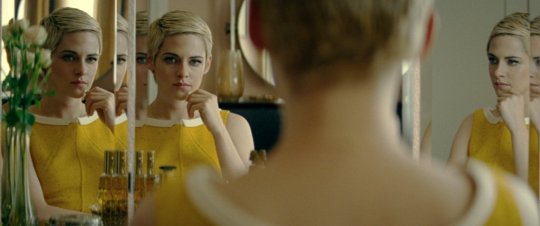
Source
127 notes
·
View notes
Text
Colonialism
You back into things sometimes.
One of my many guilty pleasures is old school pulp, which I first encountered with the Doc Savage reprints in the 1960s, then old anthologies, then back issues at conventions, and now thanks to the Internet, an almost limitless supply.
And to be utterly frankly, a lot of the appeal lays in the campiness of the covers and interior art -- brass plated damsels fighting alien monsters, bare chested heroes combatting insidious hordes, etc., etc., and of course, etc.
Once past age 12, I never took these covers or the covers of modern pulps such as James Bond, Mike Hammer, or Modesty Blaise seriously; they were just good, campy fun.
While my main focus remained on the sci-fi pulps, I also kept an eye on crime and mystery pulps, war stories, and what are sometimes called “sweaties”, i.e., men’s adventure magazines.
Despite the differences in the titles and genres, certain themes seemed to pop up again and again.
Scantily clad ladies, typically in some form of distress, though on occasion dishing out as good if not better than they got.
Well, the pulps that drew my attention were the pups made for a primarily male audience (though even in the 1930s and 40s there were large numbers of female readers and writers in the sci-fi genre). Small wonder I was drawn to certain types of eye candy; I had been culturally programmed that way.
That’s a topic well worthy of a post or two on its own, so I’m putting gender issues / the patriarchy / the male gaze aside for the moment.
What I’m more interested in focusing on is the second most popular characters to appear on the covers (and in the stories as well).
The Other.
The Other comes in all shapes / sizes / ethnicities. Tall and short, scrawny and beefy, light or dark, you name it, they’ve got a flavor for you.
“Injuns” and aliens, Mongols and mafiosi, Africans and anarchists.
Whoever they were ”they ain’t us!”
Certain types of stories lend themselves easily to depicting the villainous Other.
Westerns, where irate natives can always be counted on to launch an attack.
War stories, where the hero (with or without an army to help him) battles countless numbers of enemies en masse.
Adventure stories, where the hero intrudes in some other culture and shows them the error of their ways.
Detective stories, where the Other might be a single sinister mastermind but still represents an existentialist threat.
And my beloved sci-fi stories?
Why, we fans told ourselves our stories were better than that! We didn’t wallow in old world bigotry, demonizing blacks and browns and other non-whites because of their skins.
Oh, no: We demonized green skinned aliens.
Now I know some of you are sputtering “But-but-but you wrote for GI Joe!”
Boy howdy, are you correct.
And boy howdy, did we ever exploit the Other with that show.
I never got a chance to do it, but I pitched -- and had Hasbro accept -- a story that would have been about the way I envisioned Cobra to have formed and been organized, and would focus on what motivated them.
They were pretty simplistic greedheads in the original series, but I felt the rank and file needed to be fighting for a purpose, something higher to spire to that mere dominance and wealth.
I never got to do “The Most Dangerous Man In The World” but I was trying to break out of the mold.
For the most part, our stories fit right into the old trope of The Other.
Ours were mostly about the evil Other trying to do something nefarious against our innocent guys, but there’s an obverse narrative other stories follow, in which our guys go inflict themselves on The Other until our guys either come away with a treasure (rightfully belonging to The Other but, hey, they really don’t deserve it so we’re entitled to take it from them), or hammer The Other into submission so they will become good ersatz copies of us (only not so uppity as to demand equal rights or respect or protection under law).
These are all earmarks of a very Western (in the sense of Europe and America…with Australia and New Zealand thrown in) sin: Colonialism.
Now, before going further let’s get out terms straight.
There’s all sorts of different forms of colonialism, and some of them can be totally benign -- say a small group of merchants and traders from one country travel to a foreign land and set up a community there where they deal honorably and fairly with the native population.
The transplanted merchants are a “colony” in the strictest sense of the term, but they coexist peacefully in a symbiotic relationship with the host culture and both sides benefit, neither at the expense of the other.
Oh, would that they could all be like that…
Another form of colonialism -- and one we Americans are overly familiar with even though there are all sorts of variants on this basic idea -- is the kind where one culture invades the territory of another and immediately begins operating in a deliberately disruptive nature to the native population.
They seek to enslave & exploit or, failing that, expel or eradicate the natives through any means possible.
It’s the story of Columbus and the conquistadors and the pilgrims and the frontiersmen and the pioneers and the forty-niners and the cowboys and the robber barons.
It’s the story where different groups are deliberately kept separate from one another by the power structure in place, for fear they will band together and usurp said power structure (unless, of course, they band together to kelp make one of ours their leader, and build a grand new empire just for him).
It’s the story where our guys never need make a serious attempt to understand the point of view of The Other, because they are just strawmen to mow down, sexy lamps to take home.
I think my taste in sci-fi and modern pulp writing in general started to change around the mid-1970s.
Being in the army quickly cleared me of a lot of preconceptions I had about what our military did and how they did it.
The easy-peasy moral conflicts of spy novels and international thrillers seem rather thin and phony compared to the real life complexities of national and global politics.
Long before John Wick I was decrying a type of story I referred to as “You killed my dog so you must die.” Some bad guy (typically The Other) does a bad thing and so the good guy (one of ours -- yea!) must punish him.
Make him hurt.
Make him whimper
Make him crawl.
Make him suffer.
The real world ain’t like that.
Fu Machu falls to Ho Chi Minh.
As entertaining as the fantasy of humiliating and annihilating our enemies may be…we gotta come to terms with them, we gotta learn to live with them.
That’s why my favorite sci-fi stories now are less about conflict and more about comprehension.
It’s better to understand than to stand over.
. . .
The colonial style of storytelling as the dominant form of story telling is fairly recent, dating only from the end of the medieval period in Europe and the rise of the so-called age of exploration.
This is not to say colonial story telling didn’t exist before them -- look at what Caesar wrote, or check out Joshua and Judges in the Old Testament -- but prior to the colonial age it wasn’t the dominant form of storytelling.
Most ancient stories involve characters who, regardless of political or social standing, recognize one another as human beings.
And when gods or monsters appear, they are usually symbols of far greater / larger forces & fates, not beasts to be subdued or slain.
Medieval literature is filled with glorious combat and conflict, but again, it’s the conflict of equals and for motives and rationales that can easily be understood.
It was only when the European nations began deliberately invading and conquering / dominating foreign lands that colonialism became the dominant form of storytelling.
It had to: How else could a culture justify its swinish behavior against fellow human beings?
Even to this day, much (if not most) popular fiction reflects the values of colonialism.
Heroes rarely change.
Cultures even less.
We’ve kept The Other at arms length with popular fiction and media, sometimes cleverly hiding it, sometimes cleverly justifying it, but we’ve had this underlying current for hundreds of years.
Ultimately, it hasn’t served us well.
It traps us in simplistic good vs evil / us vs them narratives that fail to take into account the complex nature of human society and relationships.
It gives us pat answers instead of probing questions.
It is zero sum storytelling: The pie is only so big, there can’t be more, and if the hero doesn’t get it all, he loses. (John D. MacDonald summed up this philosophy in the title of one of his books: The Girl, The Gold Watch, And Everything.)
It’s possible to break out of that mind set -- The Venture Brothers animated series brilliant manages to combine old school pulp tropes with a very modern, very perceptive deconstruction of the form -- but as posted elsewhere, imitation is the sincerity form of flattery that mediocrity can pay to greatness, so while I certainly applaud The Venture Brothers I don’t want to encourage others to follow in their footsteps.
Because they won’t.
They’ll pretend they will, but they’ll veer off course and back into the old Colonialism mindset.
We need to break out, break free.
Here in the U.S. it’s African-American History Month.
The African-American experience is far from the Colonialism that marks most white / Western / Christian storytelling (and by storytelling I include history and journalism as well as fiction; in fact, anything and everything that tells a narrative).
It’s a good time to open our eyes, to see the world around us not afresh, but for the first time.
Remove the blinders.
I said sometimes you back into things.
Getting a clearer view of the world I’m in didn’t come from a straightforward examination.
It came from a counter-intuitive place, it found its way back to the beginning not by accepting what others said was the true narrative, but by following individual threads.
It came from Buck Rogers and the Beat Generation and Scrooge McDuck and the sexual revolution and Zen And The Art Of Motorcycle Maintenance and the civil rights era and Dangerous Visions and the Jesus Movement and Catch-22 and the Merry Pranksters.
It came from old friends, some of whom inspired me, some of whom disappointed me, and yet the disappointments probably led to a deeper, more penetrating insight into the nature of the problem.
This Colonialism era must come to a close.
It can no longer sustain itself, not in the world we inhabit today.
It requires a new breed of storytellers -- writers and artists and poets and journalists who can offer
It’s not a world that puts up barriers by race or gender, ethnicity or orientation, ability or age.
There’s ample opportunity for open minds.
All it asks of us is a new soul.
© Buzz Dixon
#colonialism#morals#ethics#philosophy#history#Black History Month#how this writer's mind works#GI Joe
10 notes
·
View notes
Text
Lessons for the MonsterVerse
by Bunnypwn Gold
I have always been a big fan of Godzilla. I’ve been watching the movies since I was a kid. Now that they’re making new movies again, there’s a lot to be excited about and look forward to. Recently, I re-watched the newest one from the American MonsterVerse, Godzilla: King of the Monsters, as well as the last film from the Millennium era, Godzilla: Final Wars. Both films are big, ambitious, and include some major flaws, one of which they have in common, or at least they have flaws with overlap. While the MonsterVerse, so far, is great and is on track to continue that trend, Final Wars suffered greatest from this shared flaw, and so I am here to set out what the MonsterVerse needs to do to avoid self-destruction: take itself seriously.

Briefly, I want to provide a review and synopsis of King of the Monsters. So spoilers, it’s really good. Five years after Godzilla made landfall in San Francisco and fought against the parasitic MUTOs, Monarch is struggling to figure out what it wants to do with the Titans, as the monsters are now known, while the government and military are pressuring Monarch to kill them all. At the same time, one of their own scientists, Emma Russell, betrays them to assist ecoterrorist Alan Jonah in awakening the Titans with a bioacoustics device called the ORCA so that the Titans can spur regrowth in the environment and undo anthropogenic climate change. They revive Ghidorah in Antarctica, who then awakens all the other Titans still sleeping around the world at once, thus precipitating a conflict with Monarch and Godzilla for the crown. The film sets out to cover a lot of narrative ground while introducing several important elements to the series, and all the while it held together some solid character work for its main cast. Based on the new, expansive mythos that this film lays out—with the many new Titans and the abandoned Hollow Earth society discovered in vast underground caverns which used to live in harmony with the Titans—it looks like things will only get more exciting, and the future of the MonsterVerse is set out effectively and in grand style.
Godzilla: Final Wars is also about a large amount of monsters fighting for control of the Earth, feature monsters trapped in Antarctic ice, and ends with Godzilla fighting Ghidorah, but that’s where the similarities end. Final Wars was released in 2004 as the commemorative 50th anniversary film for the franchise. In it, the Earth has been defended from monsters for decades by the Earth Defense Force, who managed to trap Godzilla in ice in Antarctica years prior. All the other monsters around the world attack at once in the present, and the EDF was unable to keep up until the Xiliens arrived from space, removing the monsters and promising to make a peaceful alliance with humanity. In reality, the Xiliens were invading the Earth in order to herd humans like cattle because they need to eat human mitochondria to survive, and they were secretly controlling the monsters. So the heroes free Godzilla so he can help them fight the aliens and their army of brainwashed monsters. The plot also involved mutant humans and a fake rogue planet that was also somehow an actual asteroid that Godzilla later blows up. It’s a mess of a movie. That aside, it’s clear the film is trying to borrow elements from the three previous eras of Godzilla movies. It took an edgier look from the majority of the Millennium movies (from 1999-2004). The use of serious, formidable super vehicles is like the various super planes from the Heisei era films (1984-1995). However, the element borrowed from the Showa era films (1954-1975) is where it falters: campiness. The difference in this film compared to the Showa films being that they purposefully made Final Wars campy, despite the opportunity they had and despite the tone of the Showa era movies.

The original film, Gojira, is a very serious and tonally heavy film depicting the horrors of the modern era, with rapid industrialization in post-war Japan, the advent of the Cold War arms race, and the reason for that arms race, nuclear weapons, with the one man capable of killing Godzilla horrified by the devastation such an ability would grant. This movie and its first sequel were the only Godzilla films made in black and white, which impacts the way they look and how their special effects come across. After a several year hiatus, Godzilla returned to the screen to fight King Kong, this time in color. Seeing those monster suits and the limited special effects capabilities in 1960 of a B-list sci-fi flick in color really emphasizes how phony it all looked at the time. Throughout the Showa era, Godzilla shifted from an entirely villainous character to an erstwhile hero, and though the movies never stopped being presented as dramatic, they were made with an acknowledgement of how they look despite the drama and seriousness the creators otherwise wanted them to have.
Over time, of course, special effects improved. Starting with the Heisei era of films, Toho was able to produce much better suits and visual effects, and so they resumed making their movies with the kind of drama and seriousness that they had wanted all along. The Millennium era began in response to the 1998 American Godzilla, which depicted the titular monster with CGI, in contrast to the Toho tradition of using suits. The Millennium era was the last hurrah to suitmation effects, and these films, overall, looked great, probably the best that a giant monster movie can look with people in suits. Accordingly, they also hold up the more dramatic tone of the Heisei era while allowing each creative team the freedom to make the standalone Godzilla movie they wanted to make. The exception to this is Final Wars, which, as previously said, was not serious at all. Despite the successes of making serious, dramatic monster movies since 1984 and the ambitions of the Showa era’s large and imaginative canon, Final Wars decided to celebrate five decades of filmmaking by using cheesy comedy, camera work that screams “we had to edit heavily to make our actors look like action stars,” and what may very well be the least convincing acting of the entire series. The only person on set who seemed to understand any of this is alien commander X, who looked like he was being goofy on purpose, instead of on accident like the rest of the cast. Final Wars had the same opportunity as the rest of the Millennium era had to present a serious, dramatic battle for the fate of the Earth, and wasted it with aliens that seem completely unqualified to invade another planet and cramming most of their monsters into throwaway fights with Godzilla that lasted on average less than a minute.
This purposeful camp and goofiness of Final Wars is presumably meant to provide a lightness and humor to the film. This is where it overlaps with King of the Monsters, which ventured into the modern era of ironic, self-aware humor to provide levity. Borrowing from the MCU, King of the Monsters cracks wise during dramatic moments relatively often, in an attempt to lighten them up. Unfortunately, the jokes they go with are the weakest material in the film, and they do more to undermine the dramatic tension than enhance the film or provide levity. It’s like the scene in Thor: Ragnarok when Korg says they can rebuild Asgard, and then it blows up more, so never mind; or Hawkeye explaining how ridiculous his fighting robots with a bow and arrow is to Scarlet Witch in Age of Ultron. Maybe those are funny jokes, but they do more to undermine the dramatic tension than they add in humor, and both have the capacity to turn parts of the audience off by poking holes in the premise. It’s rather insecure and shows a lack of confidence in the work to stand on its own merits despite critics or easy jokes from the peanut gallery. This brand of humor gave us moments in King of the Monsters like Sam Coleman mishearing Ilene Chen saying “Ghidorah” as “gonorrhea.” It’s really not that funny, it wasn’t a moment that needed lightening up, and there’s no reason he would have misheard her since he was standing within ten feet. It ultimately undermines a moment in the film for an Asian woman to demonstrate her expertise by locating vital information about the threat at hand. But yes, Sam, I guess monsters sometimes have slightly silly-sounding names, like Ghidorah, which is based on the Japanese pronunciation of hydra, a very popular and well-respected mythical dragon.
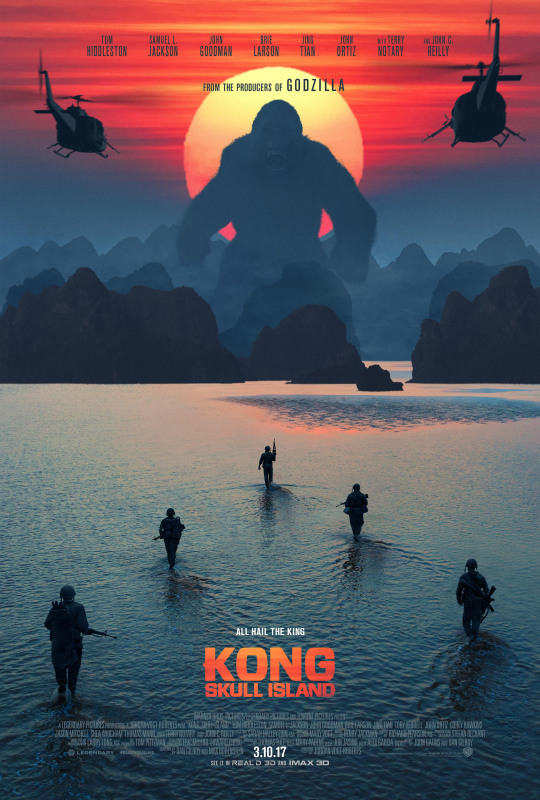
The 2014 Godzilla film that started the MonsterVerse was enjoyable, but didn’t quite live up to its potential. That’s part of the reason I delayed seeing Kong: Skull Island far longer than I should have. When I did see it, I was amazed. I expected it to be good, and I heard great things about it, but it was far better than anything I could have imagined it to be. It was a truly great movie. After seeing it, my hopes and expectations for the MonsterVerse skyrocketed. I don’t think these expectations have been let down yet, and I expect them to be satisfied moving forward. However, the one thing I wanted most going into King of the Monsters was for them to lean into the tone and style of Skull Island more. In certain respects, I think they did, and the ambitious mythos being built here is far more substantial than anything in the Godzilla franchise so far, which usually has stuck to “monsters keep showing up and fighting.” The dramatically absurd tone, though, was what they lost by using the ridiculousness of what’s happening to make quick, weak, sometimes self-aware jokes instead of to highlight the intensity of the drama experienced by the characters. In Skull Island, when the squad had to fly their planes through a permanent thunderstorm, Sam Jackson’s character started quoting a speech about how the righteous men will win by not backing down and so inherit the Earth. The speech makes the whole thing feel even more ridiculous than a permanent thunderstorm already is, and in doing so amps up the drama and tension. This ultimately makes the arrival of a giant gorilla, which the audience is expecting to see, much more impressive and intense. That’s what I wanted for King of the Monsters. Yes, there are ridiculous aspects to giant monster movies, but the characters are living it, not watching it and thinking, “This crazy.”
Having this more serious tone is also important in really hitting the audience with the larger thematic power of the film. In Skull Island, the way Sam Jackson didn’t want to back down from killing Kong, even after seeing that it’s pointless and even detrimental to the troop, is reminiscent of the way America is currently stuck in multiple seemingly never-ending wars. At least part of the reason people don’t want to leave Iraq and Afghanistan is because they don’t want to create another Vietnam, the war that this film centers around on purpose. Having that tension of a dedicated army colonel who was just forced to “abandon” his war amplifies the drama of the other characters wanting to understand the problems of the natives and come to a real solution to their problems, and it all works because of how it resonates in the current political climate. The Godzilla side of the MonsterVerse so far is focusing on climate change, which, while abstract for far too many, is also a very real and pressing concern for a lot of people, paralyzing at times. Seeing the dramatic steps needed to fix the problem almost makes Alan and Emma’s plan in King of the Monsters feel heroic. The film is filled with images of crumbling, flooded American cities, and Ghidorah, an alien creating imbalance in nature a la humanity thinking itself separate from nature, is literally a living hurricane. There’s a lot of strong, serious, intense potential to make such a movie really meaningful. If they had taken themselves more seriously, it would have had this level of impact. It really is sad that they squandered this potential on silly jokes and a story arc for their generic, useless white man hero, Mark Russell. Like I said at the beginning, it’s still a good movie, but I can so clearly see how much better it could have been, too.
To me, dramatic movies making fun of themselves in important scenes always comes across as insecure, like filmmakers can’t simply make their movie first, they also have to preempt the internet to protect their egos. As the MonsterVerse moves forward, my biggest piece of advice is to do what Skull Island did and take itself seriously. We live in a time when a lot of previously niche franchises and genres are getting more spotlight due to the demands of studios wanting more high-action, effects heavy movies to sell huge on the international market. As these genres, once mired in cultural neglect and seen as silly and childish, come into the limelight, they both prove they always were to be taken seriously and poke fun at themselves to prove they know they shouldn’t be. I get the appeal of ironic, self-aware humor and wanting to be silly at dramatic high points, because it can be very fun and, when used properly, be incredibly funny; look to Thor: Ragnarok for an overall great example. But besides issues of improper use, this kind of humor is arguably at saturation at this point. It’s being misused and overused to the detriment of otherwise good movies in an attempt to compete with Marvel, who remains the poster child on this. So MonsterVerse, let Marvel, Disney, and all those imitators try to outdo each other by proving they can make more fun of themselves before Honest Trailers get to them. Just have fun making movies about giant monsters with the kind of drama and seriousness only modern special effect can give them, and use the ridiculousness of it all to amp up that drama instead of undermine it. Get over people calling you a nerd and just do your thing. As they say, being cool is all about confidence.
#Godzilla#king of the monsters#kong#skull island#titans#ghidorah#final wars#movies#monsters#giant monsters#marvel
10 notes
·
View notes
Text
Starlog USS Christopher
Entry 2 - Stardate 7 May 2019
Media Analysis - Star Trek Pilots
Question 2: Which pilot best addresses the contemporary societal issues from when it was produced while taking the most advantage of the television format on which it was shown? Rank the episodes you watch in numerical order where 1 is the episode that best answers the question prompt
“The Cage.” Star Trek: The Original Series
“The Man Trap.” Star Trek: The Original Series
“Broken Bow.” Star Trek: Enterprise
For my media analysis of the pilot episodes I chose three. The pilot for the Original series “The Cage” as I have never seen it, the 1st episode with the original series cast we have come to know and love “The Man Trap” and the first episode of Enterprise, “Broken Bow Parts I & II”. The reason I watched “The Man Trap” rather than “Where No Man Has Gone Before “ was that “The Man Trap” was the first episode to be televised while “Where No Man Has Gone Before” was the first episode of the original series with James T. Kirk to be produced, so this is what Netflix showed me after “The Cage”. My bad! Comparing the two pilots of the Original series, the differences are quite stark. Captain Pike is a more serious, less fun character than Captain Kirk, with none of the swagger that Shatner brought to the role. There are some similarities in the two episodes, with an attractive woman being controlled by an alien intelligence, but to my mind “The Cage” featured a stronger female protagonist. Vina was an intelligent woman, kept alive as an artefact in some perverted museum, who simply longed for some companionship. When it was revealed that her appearance was being made more attractive for Captain Pike, and she was in fact horribly disfigured after she crash landed on the planet and was rebuilt by the Talosians, who lacked the knowledge of what humans looked like and therefore did a botched job. For me this was heartbreaking, but it was a nice conclusion that the Talosians constructed an illusion of Captain Pike to act as her companion. In “The Man Trap”, Nancy Crater is shown to being an alien who can manipulate how others see her. She uses this power to seduce crewmembers to their death, draining them of salt that she needs to survive. Although Doctor Crater claims she also craves companionship, after killing him she is ultimately revealed as an alien monster, and is unceremoniously killed. One of the other major differences I noticed between “The Cage” and “The Man Trap” is that the crew of the Enterprise is much more diverse on James Kirk’s ship. One can speculate that after getting a series order, Gene Roddenberry moved ahead with his utopian vision of the future, where all nationalities are represented in Starfleet. I believe this is one of the major reasons for Star Trek’s continued appeal.
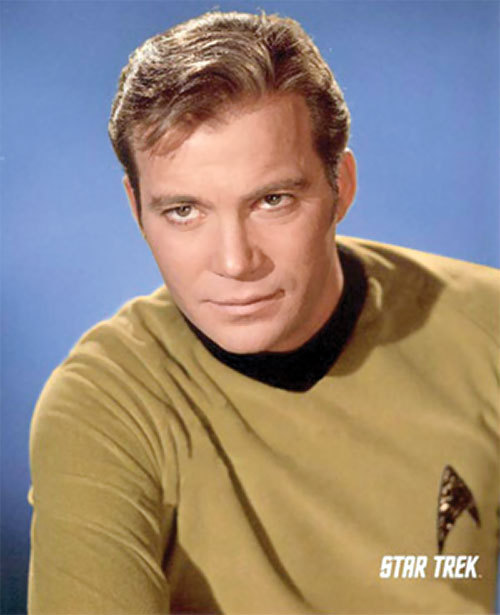
Moving from 1960’s Trek to the early 2000’s turn-of-the-Millennium Star Trek Enterprise was an eye opener. While Star Trek has always been quite progressive with it’s politics, featuring a diverse cast, with some strong female roles. I think that in many ways, while Enterprise continued to provide some great female characters like T’Pol, portaying them as highly intelligent and capable of taking on a senior management role on the Enterprise, in some ways it had gone backwards in it’s treatment of female characters. This was none more evident than the shower scene with T’Pol and Trip where they were rubbing soap on each other to clean of the alien goo. It felt a bit forced, a bit soft-porn and completely inappropriate as the camera lingered way too long on T’Pol’s naked mid-riff. I feel that this clumsy attempt to show Trip’s attraction to her, and the clumsy sexualisation of her was misguided and completely inappropriate. While the original series always featured an attractive woman (human or alien!) with eyes for Captain Kirk, and often needing to be rescued, the female leads were always treated well in my opinion. I think that the Next Generation, Voyager and Deep Space Nine went even further and really treated women with dignity and respect, so this scene in Enterprise really came as a shock to me and showed that perhaps, despite 35 years of progress, sometimes enlightened attitudes can slip backwards. This is something we need to be constantly vigilant about.
In terms of which episode addressed contemporary societal issues the best at time of transmission, I am going to choose “The Cage” which asked what it meant to be human, important during the 1960′s with the Cold War hanging over our heads and the horror of the Vietnam War in full swing.
In terms of taking best advantage of it’s television format, it has to be “The Man Trap” which offered a rollicking adventure yarn that appeals to all family members. There’s monsters, attractive people and a frenetic pace that has something for mum, dad and the kids. I feel that the other two episodes, while fun in their own way, did not capture the zeitgeist of the time like James T. Kirk and his crew did week-in, week-out.
MY NEW RANK. I’ve received a promotion to Ensign!

#winning
1 note
·
View note
Link
By Ralph Blumenthal and Leslie Kean, Jan. 15, 2019
“Featuring a Russian spy murder, a self-immolation, gun-toting government thugs and other fanciful plot devices, “Project Blue Book,” History’s popular new series on the Air Force’s program to investigate and debunk U.F.O.s, is not your historian’s Project Blue Book.
We viewed the first six episodes from the standpoint of writers who have long worked on the serious side of U.F.O.s. We broke the December 2017 New York Times exclusive on a secret Pentagon program investigating the phenomenon, with our colleague Helene Cooper. Leslie Kean wrote the Times 2010 best-seller “U.F.O.s: Generals, Pilots and Government Officials Go On the Record.” Ralph Blumenthal has written about U.F.O.s for Vanity Fair as well as The Times.
So, despite the embellishments, we were interested to discover parallels between the TV version and the historical and current reality.
[Read the 2017 Times report on the Pentagon’s secret U.F.O. program.]
The History series predictably sensationalizes and overdramatizes case investigations and the historical figures involved, adding many story elements that simply never happened. It’s already hard enough for those trying to understand the truth about government involvement with U.F.O.s without mixing fact and fiction.
Nonetheless, melodrama aside, the real story is there:
Project Blue Book was the code name for an Air Force program set up in 1952, after numerous U.F.O. sightings during the Cold War era, to explain away or debunk as many reports as possible in order to mitigate possible panic and shield the public from a genuine national security problem: an apparently technological phenomenon that was beyond human control and was not Russian, yet represented an unfathomable potential threat.
The central character of the TV series, the prominent astronomer J. Allen Hynek, played by Aidan Gillen, was recruited as Blue Book’s scientific consultant and was indeed initially committed to explaining away flying saucers as natural phenomena or mistaken identifications. But he gradually realized that the bizarre objects were real and needed further scientific attention. (Though he never saw a supposed alien creature floating in a tank or crashed in a plane while recreating a reported U.F.O. dogfight, as depicted in the series.)
While Hynek was involved, Blue Book compiled reports of 12,618 sightings of unidentified flying objects, of which 701 remain unexplained to this day.
But what’s most important to study during that era is what occurred outside Project Blue Book, to the extent that it has been revealed. When we reported on the Pentagon’s Advanced Aerospace Threat Identification Program, which began in 2007, we offered a glimpse into a similar scenario today: military cases being investigated and filmed without the public knowing. This time, however, there was no public agency to accommodate reports of incidents, even when hundreds of witnesses were involved.
We learned through documents from the Pentagon program, and from interviews with participants, that the mystery of the elusive flying objects is still far from solved, and that not enough was being done to address that problem almost 50 years since the close of Blue Book.
The real Hynek, the Blue Book’s scientific consultant, at one of his observatories in the 1960s. Once a U.F.O. skeptic, he became a believer.CreditNorthwestern University
Gillen as Hynek in “Project Blue Book,” which predictably sensationalizes the story.CreditEduardo Araquel/History
It all began in 1947. Lt. General Nathan Twining, the commander of Air Materiel Command, sent a secret memo on “Flying Discs” to the commanding general of the Army Air Forces at the Pentagon. Twining stated that “the phenomenon reported is something real and not visionary or fictitious.” The silent, disc-like objects demonstrated “extreme rates of climb, maneuverability (particularly in roll), and motion which must be considered evasive when sighted or contacted by friendly aircraft and radar.”
A new project, code-named “Sign,” based at Wright Field (now Wright-Patterson Air Force Base) outside Dayton, Ohio, was given the mandate to collect U.F.O. reports and assess whether the phenomenon was a threat to national security. With Russia ruled out as the source, the staff wrote a top secret “Estimate of the Situation,” concluding that, based on the evidence, U.F.O.s most likely had an interplanetary origin.
According to government officials at the time, the estimate was rejected by General Hoyt Vandenberg, the Air Force chief of staff. From then on, the proponents of the off-planet hypothesis lost ground, with Vandenberg and others insisting that conventional explanations be found.
Project Sign eventually evolved into Project Blue Book, with the aim of convincing the public that flying saucers could be explained.
Yet behind the scenes, authorities grappled with something sobering: well-documented U.F.O. encounters involved multiple trained observers, radar data, photographs, marks on the ground and physical effects on airplanes.
In 1952, the office of Maj. Gen. John Samford, the Air Force director of intelligence, briefed the F.B.I., saying it was “not entirely impossible that the objects sighted may possibly be ships from another planet such as Mars,” according to government documents. Air Intelligence had largely ruled out an earthly source, the F.B.I. memo reported.
National defense concerns were mounting as well. After Air Force planes scrambled to intercept brilliant objects seen and picked up on radar over Washington in 1952, Samford called a news conference to calm the country.
He announced that between 1,000 and 2,000 reports had been analyzed and that most had been explained. “However,” he conceded, a certain percentage “have been made by credible observers of relatively incredible things. It is this group of observations that we now are attempting to resolve.”
He said no conclusions had been drawn, but played down any “conceivable threat” to the United States.
Later that year, however, H. Marshall Chadwell, the assistant director of scientific intelligence for the C.I.A., concluded in a memo to the C.I.A. director, Walter Bedell Smith, that “sightings of unexplained objects at great altitudes and traveling at high speeds in the vicinity of major U.S. defense installations are of such nature that they are not attributable to natural phenomena or known types of aerial vehicles.”
By 1953, authorities were concerned that communication channels were becoming dangerously clogged by hundreds of U.F.O. reports. Even false alarms could be perilous, defense agencies worried, since the Soviets might take advantage of the situation by simulating or staging a U.F.O. wave and then attack.
Documents show the C.I.A. then devised a plan for a “national policy,” as to “what should be told the public regarding the phenomenon, in order to minimize risk of panic.”
After a closed-door session with a scientific advisory panel chaired by H.P. Robertson from the California Institute of Technology, the C.I.A. issued a secret report recommending a broad educational program for all intelligence agencies, with the aim of “training and debunking.”
Training meant more public education on how to identify known objects in the sky. “The use of true cases showing first the ‘mystery’ and then the ‘explanation’ would be forceful,” the report said. Debunking “would be accomplished by mass media such as television, motion pictures, and popular articles.”
That plan involved using psychologists, advertising experts, amateur astronomers and even Disney cartoons to create propaganda to reduce public interest. And civilian U.F.O. groups should be “watched,” the report stated, because of their “great influence on mass thinking if widespread sightings should occur.”
The Robertson Panel Report was classified until 1975, five years after Blue Book was shut down. But its legacy endures in the aura of ridicule surrounding U.F.O. reports, inhibiting scientific progress.
“The implication in the Panel Report was that U.F.O.s were a nonsense (nonscience) matter, to be debunked at all costs,” Hynek wrote. “It made the subject of U.F.O.s scientifically unrespectable.”
One famous photo from the Blue Book files, taken by a farmer, was extensively analyzed but never explained.CreditBettmann/Getty Images
Hynek, the former U.F.O. skeptic, eventually concluded that they were a real phenomenon in dire need of scientific attention, with hundreds of cases in the Blue Book files still unexplained. Even many of the “closed” cases were resolved with ridiculous, often infuriating explanations, sometimes by Hynek himself.
“The entire Blue Book operation was a foul-up based on the categorical premise that the incredible things reported could not possibly have any basis in fact,” he wrote in the 1970s, when he was finally free to speak the truth.
When Blue Book closed in late 1969, the Air Force flatly lied to the American people, issuing a fact sheet claiming that no U.F.O. had ever been a threat to national security; that U.F.O.s did not represent “technological developments or principles beyond the range of present day scientific knowledge”; and that there was no evidence that they were “extraterrestrial vehicles.”
(Just a few years earlier, in 1967, a glowing red oval-shaped object hovered over Malmstrom Air Force Base in Montana, and all 10 of the facility’s underground nuclear missiles became disabled almost simultaneously while the U.F.O. was present, according to interviews with witnesses and official government reports. Technicians could find no conventional explanation.)
But whatever the Air Force told the public, it didn’t actually stop investigating U.F.O.s. A once-classified memo, issued secretly in October 1969, a few months before the termination of Blue Book, revealed that regulations were already in place to investigate U.F.O. reports that were “not part of the Blue Book system.” The memo, written by Carroll H. Bolender, an Air Force brigadier general, went on to say that “reports of U.F.O.s which could affect national security would continue to be handled through the standard Air Force procedures designed for this purpose.”
Clearly, government agencies continued to have some level of involvement in U.F.O. investigations in the decades following — and to the present. Despite government statements to the contrary, once-secret official documents include detailed reports of dramatic U.F.O. events abroad. Many cases at home were not investigated, including a 2006 event in which a disc-shaped object hovered over O’Hare Airport for more than five minutes and shot straight up through the clouds at an incredible speed.
Our reporting in 2017, which led to briefings for members of Congressional committees, showed that not much has changed since the close of Project Blue Book.
Scientists may know more about the behavior and characteristics of U.F.O.s and are closer to understanding the physics of how the technology operates, according to A.A.T.I.P. documents and interviews. But the government still makes every attempt to keep investigations and conclusions secret, while denying any involvement to American citizens.”
#Leslie Kean#UAP#ufology#ufo#investigative journalism#investigative reporting#SEP#Society for Extraordinary Phenomena#extraterrestrial hypothesis#extraterrestrial#anunnaki
3 notes
·
View notes
Photo

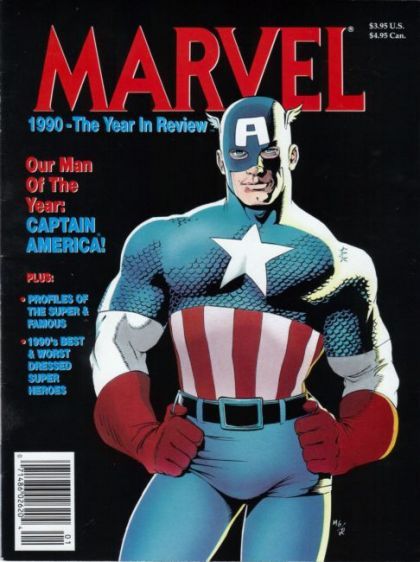


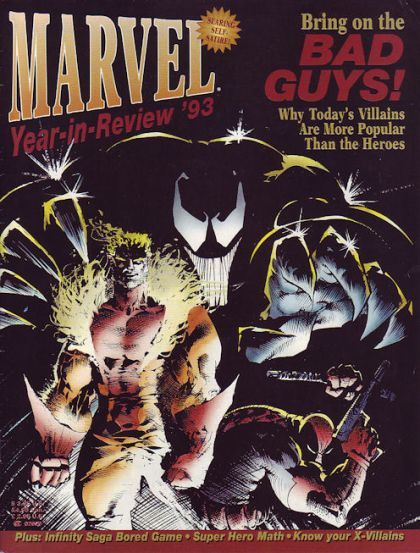




'THANOS'S GRANDAUGHTER: GO SUCK EGGS GRANDPA!' DEPT.
'The title means exactly what the words say: NAKED Lunch - a frozen moment where everyone sees exactly what is on the end of every fork.'
-William Burroughs, from the foreword notes for the novel 'Naked Lunch'.
THE GATEKEEPERS!
As may not possibly surprise you lot, we've run afoul of some of the more humourless elements of fandom in our time. This is probably down to the fact that we don't take superhero comics very seriously but are utterly enamoured of some of the more sillier elements of history. True story. We were once told off by a man in Green Lantern fangroup (We were bored.) because we thought that the origin of Kyle Rayner is so nakedly Freudian and 'Will this do?' to be hilarious.
To recap:
On a planet called Oa exists a race of short, bald humanoids with large heads called The Guardians. The Guardians believe in enforcing Order in the universe and go about this by way of selecting the most suitable candidate (called a Green Lantern.) of each sector of the universe to be given a power ring that does whatever the wearer can imagine. This ring had no effect on anything yellow due to a necessary flaw in the design to stop the wearer from having absolute power. Also, it has to be recharged every 24 hours.
Our sector of the universe is 2814, and of the 7200 Lanterns patrolling the universe at any given time, ours was a chap called Hal Jordan. Very strong-willed, very daring. Hal got the ring off an alien called Abin Sur who was on his way to give either him or a ginger bloke with a Moe haircut called Guy. Hal happened to be closer than Guy, so got the ring.
Hal Jordan went onto be a successful Green Lantern for several years but things went terribly wrong when a big yellow space tyrant called Mongul, teaming with a cyborg pretending to be Superman destroyed Hal's home of Coast City, murdering tens of thousands of people and left Hal shattered, feeling he'd failed in his duty as Earth's protector.
The loss of everything Hal cared about sent him insane, and he attempted to resurrect his destroyed home using the power ring, but he could only achieve a replica of what he'd lost and the ring wasn't designed to create that much matter for a presumably infinite period of time. His perceived second failure cemented his full breakdown, and he went on a murderous rampage in order to gather as many Green Lantern rings as possible on the way to returning to Oa is seize the original Green Lantern ring. Things go quite wrong as Hal murders the entire Lantern Corp and all but one of the Guardians: Ganthet.
Ganthet, a wee blue fella cosplaying as Orko off the He-Man cartoons pegs it back to Earth. Once there, he floats to L.A., sees a drunk bloke taking a piss against a wall and gives him the final power ring before sodding off, exclaiming 'The Ring will sort you, mate. No worries.'
A BLUE SPACE MIDGET IN A RED DRESS GIVES A DRUNK LAD ONE OF THE MOST POWERFUL WEAPONS IN THE UNIVERSE AND THEN FUCKS OFF IS THE ORIGIN OF KYLE RAYNER, GREEN LANTERN OF EARTH.*
This would be weird as a 1960's comic but at least the DC Editors of the '60s had no idea any of this stuff would be reprinted and pored (Hi, Donald.) over by future generations. Supergirl is having a relationship with a fella who turns into her horse but she doesn't know about it? Fine. There's a space creature from the fifth dimension who has a real thing for winding up Superman every ninety days and can only be stopped by tricking him into saying his name backwards? Gotcha. Batman owns a dog who fights crime but wears a mask on patrol so no one will link Ace The Bat-Hound with Bruce Wayne. Of COURSE. Beppo The Super-Monkey? PRINT IT! Who will care in five years? Who will even remember, right?
Green Lantern 50 (2nd series, 1994) was published post Watchmen, post Dark Knight Returns, post Brat Pack and all of the other silly 'Corporate Superheroes Can Be For Adults' malarkey. We were now aware of subtext, metaphor, aspirational text and either this is a daft attempt at being a mature comic (which given it features a nervous breakdown, genocide, the total psychological breakdown of one of the icons of the DCU and the first example of 'Fridging' quite soon after, it ought to be.) or it's a very bad attempt at pitching a superhero comic at the kids.
The real answer was of course that DC were trying to get attention back they'd lost to the Marvel Superstar period and subsequent formation of Image. Superman grew a mullet, Batman needed a wheelchair and was replaced with a religious nutter wearing Vatican levels of gold, Wonder Woman was replaced with a giant legged redhead, The Flash broke his leg. It was all kicking off.
But we always found the whole Kyle thing hilarious, and when making our usual jokes about it ('Good thing Ganthet didn't run into Richard Pryor!', etc.) we were scolded. It turns out the story had been rewritten a bit as part of something called Green Lantern: Rebirth so it made a bit more sense. Lord knows some of our best friends are comic fans, but when they start quoting the continuity of a DC comic with capitals like they WERE reciting THE Bible and Geoff Johns DID make it GOOD, we get a bit scared.
All that was a recap of 5 comics. (Green Lantern 47-50 and Superman 80) and was almost impossible to recap straight. When we tried to give a factual, chronological accounting of these comics, we weren't capable of throwing in a few puns. And circa 1989-1993, nor were the staff of Marvel Year In Review.
When people try to contemplate the early 90's and Marvel, they think of Spider-Man 1, X-Force 1, X-Men 1. If you narrow the field down to Marvel Magazines, probably the movie adaptations, poster specials and most likely the BEAUTIFUL Marvel Illustrated Swimsuit Editions. Few will remember the spectacular Marvel Year In Review annuals. That's a shame, because with one notable exception* it was the last time they displayed an ability to take the mick out of themselves beside the better issues of John Byrne's run on She-Hulk or the comedy title 'What The--?!' (also canceled, sadly in 1993.).
Marvel Year In Review, in theory, was probably originally designed to be exactly that: A chronological overview of every comic published by Marvel over the previous 12 months. That sounds simple enough but can you imagine being the poor saps who not only have to read all those comics but attempt to sum them up as a factual synopsis. The work and time we just put into four issues of Green Lantern was murder and at least interesting things happened in those books. 'Hey, Dwight here's all of Acts Of Vengeance to work out, and see if you can explain what a Captain Universe is and why Spidey might become possessed by his powers, there's a pie in it for you. Barry, you got Atlantis Attacks.' Interns were probably diving out of the window at the sight of editor Bobbie Chase approaching them with a stack of Alpha Flight.
So rather than put out another dry, just the facts ma'am comic to sit along Marvel Age, The Offical Handbook Of The Marvel Universe or Marvel Preview, they changed gears. Marvel opted for a magazine format with covers emulating the likes of Time and later National Lampoon and sadly unnoticed New York-centric mag Spy. The early issues provided something of a review of the year but in journalistic form for some of the bigger events juxtaposed with pieces on 'Best and Worst Dressed' and ads for products like Damage Control, who would sort out your house if it'd been trashed in a fight between The Hulk and The Wrecker, a tourist ad for Latveria, posters for the new Simon Williams film or a flyer for the next Dazzler disco compilation. Long before Alex Ross painted every last rock on Ben Grimm's back, Marvel TYIR gave you an insight into what it would be like to be a resident of the Marvel Universe reading a 616 style issue of National Lampoon.
MYIR also ran interviews with various superheroes, (Including Rick Jones recounting the time he met Elvis, by far the best thing to come out of Infinity Gauntlet/War/Crusade.) a review of Nightcat's debut album, an appetite suppressant for Galactus, the 'Who Died This Year, Who Came Back From The Dead and Who Managed To Stay Dead' update, an expose of Genosha's tourist, a create your own 90's superhero name and origin generator (which turned out to be surprisingly accurate.) an account of two disenfranchised rival employees's visit to the Marvel Offices and ooh, loads more.
This is speculation on our part, but the knife gets a lot sharper around the 1992-1993 editions. The full chronology is written with a weary black humour of someone's who just seen too much and is getting bitter. The full-on assault on the 1993 annuals, certain top-tier artists 'showing their influences too clearly' and inadvertently predicting the future of more brutal and uncaring superhero comics in the article 'Bring On The Bad Guys' from MYIR 1993.
There's a huge shift in attitude and editorial policy in the next 12 months. Several publishers have gone bust, Tom Defalco is gone as Editor In Chief and replaced with 5 people in charge of various parts of the publishing line, turning Marvel into a series of little fiefdoms with varying degrees of co-operation between each other. We've just met Peter Parker's robot parents. Aunt May is about to die. Reed Richards is dead. Jim Wilson is dead. Legion resolves to kill Magneto. Dr Strange has an idea for something called 'The Secret Defenders'. Everything is about to get very serious and therefore far more ripe for parody.
And with no word, no goodbye from the editors, nothing in the fan press nor explanation, Marvel Year In Review 1994 was solicited thusly:
'Marvel Year In Review 1994 - Just the facts, ma'am. Gone is the tongue-in-cheek humor of the past; the Marvel Year in Review offers a factual recap of the major Marvel Universe events of 1994. It's short on lengthy text and long on splashy art and fact-filled sidebars. Included are all the happenings from the pages of X-Men, Spider-Man, Fantastic Four and Ghost Rider, plus art by Andy Kubert, Chris Bachalo, Tom Lyle and many others! $2:95. $4.00 CAN'
And it was. Normal comic size. No chatty opener from the editor with puns and gags. No angry letters from readers just wanting to know what happened in X-Force and wanting to be rid of the MODAM jokes. No ads. Not even, truth be told, much in the way of recaps so much as trade dress-less cover repros with dialogue quotes and a paragraph or two to cover the essential plot elements, finished with the most perfunctory 'Er, will this do?' appeal to the readers on the last page. Turns out that no, it wouldn't do at all, as there was no Marvel Year In Review 1995 or any other edition either.
Marvel has put out a few self-parody books since, such as Marvel RIOT!, House Of Hem, Marvel WHAT Now?, Who Won't Wear The Shield, Wha HUH? and obviously Deadpool crosses the lines frequently, but there's not been something that clever nor ambitious since. Perhaps the line between reader, writer and editor aren't as clear as they used to be or simply today's audience wouldn't be as immediately familiar with the formats being parodied and as the recent attempts to parody Marvel fanfiction have shown, sometimes an idea just belongs to its time. As a magazine that featured fun work by the likes of Todd McFarlane, Dan Slott, Sam Kieth, Peter David, Kevin Maguire and a different angle on a world that takes itself a little bit seriously at times, Marvel Year In Review was a fun little ride while it lasted.
(Note to self. Never, ever look up Marvel fanfiction again. Ever.)
*This may be different now but was certainly the case in 1994. Origins, histories and such might have changed due to 52, Convergence and Rebirth. We were told that Flashpoint was the end of the DC Universe as we knew it, and we took that as a good place to stop reading. Except Section Eight and Batman/Elmer Fudd obviously.
Dedicated to the memory of Steve Ditko.(1927-2018)
#Marvel#DC#Spider-Man#Green Lantern#Year In Review#Todd Mcfarlane#Jim Lee#kevin maguire#Sam Kieth#X-Men#Punisher#Deadpool#Sabretooth
13 notes
·
View notes
Text
MICHELANGELO ANTONIONI and TONINO GUERRA’S ‘LA NOTTE’ “I lacked the courage to go all the way”
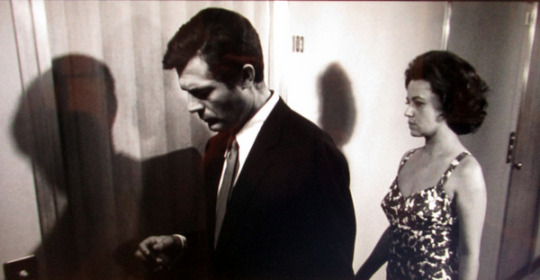
© 2021 James Clark
Having finally, in the preceding essay, L’Avventura, ventured upon the cues of poet-film writer, Tonino Guerra, one might proceed with gusto upon the second campaign, namely, La Notte (The Night), 1961.
However, before thrilling to a rare lucidity from Guerra, I must describe how wrong my first impressions of this film were. (Not that it matters what I did; but there is a lapse which everyone involved has missed, a crucial mistake.) In those days, Antonioni could do no wrong in my eyes. But an anonymous note which I stumbled upon back in 2013 for a blog , in Wonders in the Dark, concerning La Notte, and promptly forgot, might have wakened me up a bit. The preamble of the “behind the scenes,” involved another fan, shoring up the Antonioni line. “I’ve become fascinated in gradually realizing that almost the full complement of this indie—yes—but also guerrilla art, had been met with censure. It was something of a jolt to learn that the film on tap here, La Notte, hinged upon two great performers (and specialists to boots) concerning problematic incitement, namely, Marcello Mastroianni and Jeanne Moreau, who hated this assignment and did not take seriously the roles they were to sustain. Mastroianni, in particular, spent quite a bit of time on the set quarrelling with one of the writers, Tonino Guerra. And that rancor, with its behind the scenes clutter, cues our special concern here, regarding the precise nature of Antonioni’s pristine closures within complex and even Byzantine involvement by associates, though contrarian with regard to conventional filmmaking, unlikely to have absorbed the unique physicality of his inspiration.”
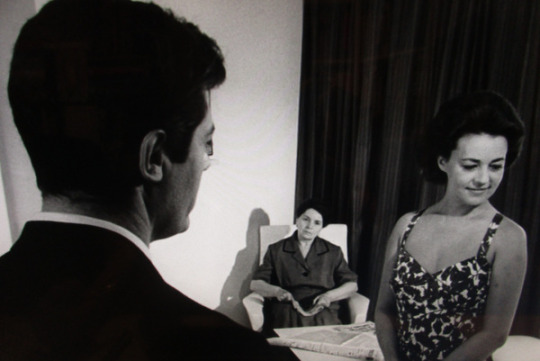
One more time: “… unlikely to have absorbed the unique physicality? ” The unique physicality was entirely the initiative of that trouble-maker!
Let’s see if I can make amends. Guerra, the necessary “nuisance,” would have constructed for the Antonioni appellation, a seeming hot intellectual subject, namely, “alienation,” wherein to place a far more comprehensive and far more profound demand. Right from the opening credits, with a steep, steady drop of an empty glass elevator, there is an oblique indication that human authority has stepped back a move. We’re in Milano, with its heady schemes, but that steady fall steals the show. Very soon a moving car with a man and a woman on board, nearly becomes crushed by a wreckless heavy- construction worker. The escapees use an elevator to reach a friend in a hospital. As they approach their destination, we notice that each of them conveys a remarkably vivid shadow. We imagine that the anxiety here (terminal cancer) has been given a graphic form. That form, with its mundane, shadow aspect, can stand as a promise that another force has to be reckoned with, despite being lost to the “realists.” During this event, we notice varying intensity (including that of the victim and the victim’s mother); and, sometimes, also no shadow at all. This forum of potential mystery and potential power consists by way of an agency unseen per se. But when one has an inkling to be fully alive, that constituent will see what one’s made of. The elevator was an entrée. The rest of the saga is out of this world.

Therefore, when the host of the occasion, Tommas, asks, “What’s new?” he’s really hoping for a moment of courage, not another diversion. Not that it’s another humdrum moment, but Tommas, providing his own expected response, “Your book comes out today!” has other matters on his mind. Intensity, but missing the boat. Giovanni, the novelist in the room, tells him, “Let’s not talk about that.”/ “Why not?” Tommas asks. Giovanni shrugs off that news with, “One has to do these things…” (launching a supposed important book). If we take the writer to be not simply being polite in his good fortune, we’ve encountered a gigantic lack of gusto. (No serious lift, here, from the strongest of helpers.) Right here, we are face-to face with eliciting the elements from our own courage and from what love collaborates. Tommas, also a writer, exhorts, “And your books, the only thing that really matters.” Grossly lost perspective. But on the other hand, there is his most recent essay in an obscure journal. And though all but a dead man, Tommas feels the wonderfulness of the moment. He makes a distinct shadow of his upper body. He has made a statement of understanding. He’ll, unfortunately, declare, “I see things more clearly now… So many things become clear when you’re all alone.” (He had just blurted out that he strongly felt at home with them. Could he be both?!) “I feel like I’m watching from the sidelines, when I should have been more involved.” (Easier said than done.) “I lacked the courage to go all the way.”
“All the way…” Giovanni praises Tommas’ powers. “You, a quitter? Then I should give up writing!” (Before the film ends, he does just that.) The flood of dynamics moving into solidity. The dying man slips into self-pity. “I wasn’t smart enough, anyway.” Smart is not the matter. Tommas had well disclosed the dilemma: courage. Our saga, with its black graphics freefall, was only one of many vigorous gifts of disinterestedness. While those two dig into careers, and perhaps slip a bit (or slip a lot), the full gift may be just around the corner. It also may be elsewhere. The latter does not mean that reflections can’t rally. All the actions to come pertain to perseverance. So while the brave patient, the brave mother and the very questionable couple move apace, those shadows of promise need to be understood. Giovanni has only one moment of wit that makes perfect sense. He tells Tommas, “You give success the slip.” (Guerra, the true genius, gave “success” [fame and fortune] the slip, while embracing the depths of art.) But that room of irony, a bit of magic in full body, flourishes. Tommas’ mother, we learn from the patient, had had a regular seven hour train ride; and was now struggling without sleep. More little moments to ponder.
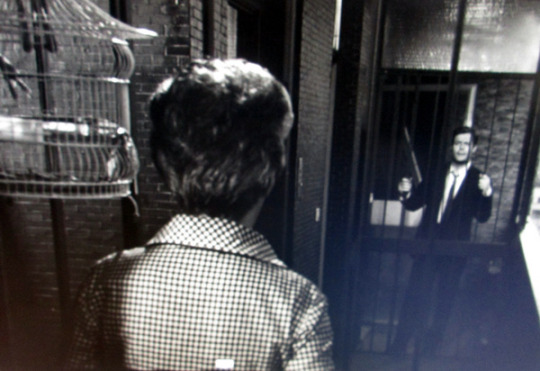
Instead of Antonioni’s easy and fashionable alienation (being a picture, in fact of Giovanni and Lidia [his wife]), Guerra, the adult, opens his eyes to a portal of maturity, vastly more exciting and penetrating. Lidia bails out early from Giovanni’s opening. She embarks upon a long afternoon in the city, beginning with jay-walking across a very hectic and dangerous street, which she manages with remarkable panache, pivoting like a matador. An Olympian there. But hardly, in other matters. (We’re reminded of the non-athletes in the film, L’Avventura [1960], capering over deadly rockfaces.) If she can do that, she can be brave in other matters. It’s all in the culture. A culture destroying itself.
Lidia’s afternoon voyage has a destination. Soon she has entered a slum, with a crying toddler. She does not linger long. She sees fit to tell the child, “What’s the matter?” Then she looks for a moment to a blackened burned wall. A jet roars over. She takes a taxi to an industrial area. She tells the driver to wait. Then a series of events, pertaining to physical power, occurs. Along with that, there is the recognition that she has had much to do with the area, though their car, as we’ll see, is a very expensive one, and their apparel is affluent. But we shouldn’t conclude that she was born there. She was, in fact, as much a patrician as he. (Bergman on the job.) But she has unfinished business to ponder here. In the hospital, Tommas remarks, “I regret spoiling many of your evenings with my presence in your lovely apartment.”/ Giovanni responds, crazily, with, “It’s your home too. You know that…” (A cliché, to measure how far they are apart.)

Though classically patrician at heart, there had, it seems, a spate of rebellion based in this precinct. The rebellion, with a safety net, would have been short lived. But here, Lidia, when the odds seem frighteningly wrong, there was a fantasy to cling to, a sensibility of earthiness. She wanders in the familiar range, and soon she’s upon a familiar event, a brawl involving young boys , with one of the fighters smashing the other to a pulp. Too real, she finds, and with her sense of authority she ends that savagery. On she continues, to a large field where young boys (once again) look for a silver lining. There we see a group of boys shooting off rockets. More implacable dynamics, their elevation involving—along with the violent noise and speed—keening for something unheard of (while what is heard of, continues to make them sick, an uncanny sickness). She phones up the reluctant novelist to come out there with her, to hopefully, once again cross that dangerous road. “They go up really high. It’s beautiful!” Giovanni proves to be in no mood for neither something new nor nostalgia. His patrician sense of advantage does not budge; but that has left him with nothing. On reaching the place of the former experiment, all he has to say is, “These tracks used to be in service when we used to come here.” The cantina where Lidia was on the phone, pipes out from a radio, “Our program continues with more easy listening.”

Back at home in their killer digs, Lidia, not easily to be squelched, tells him, “I don’t feel like staying in.” Her first choice was a party at a villa. But on realizing the host would want to take up again the question of Giovanni’s being hopefully compromised in his writing, she thinks of something much better. (She signs off from that cloud with, “Every millionaire wants his own intellectual. You must be his choice.”) Feeble shadows. She looks at him and glares. The subject of ditching the hardness. “What’s wrong?” he asks. In response she mocks, “Would you fasten me?” Dead gestures, and the shadow being lost. “I’d rather we went out by ourselves,” the minor matador decides. As things go by, she likes the show; but she should have liked it much better. A statuesque, black dancer and her retinue, does something even more amazing with her sensibility, her body, and her heart than the climbers and the jay-walker. Giovanni tells her, “Look at her. She’s not bad at all.” Not bad!? Then he looks away to check a woman server. The performer holds an empty wine glass in her hand. She slowly, very gracefully, performs a forward roll, ending by placing the glass being filled on her forehead. A dimension of incredible grace. Then many awe-inspiring twists and turns follow. There is a close-up of Lidia. She touches Giovanni’s cufflink. “You remember?” she urges, when sexy was more than that. His response is, “You’re really trying to distract me.” She smiles but it’s light-years away. This night has the beginning of a watershed. Her subsequent move, “I can have thoughts of my own,” promises what she can’t deliver. She feebly backs off, “I don’t have any at this moment, but I’m expecting one. I can feel it coming.” The sax easing the dancer’s magic. Though having recently frowned upon the world of patricians, Lidia now thinks her best hope could be an infiltration of irony. Silence as virtue. There is no kick-start of a jaunty elevator, here.
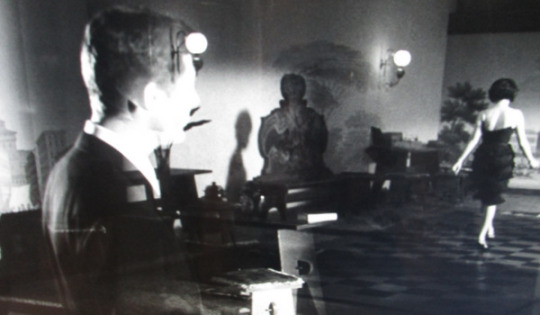
It’s an all-night party, but no one gets out alive. This last hurrah in Lidia’s reflections needs close attention amidst scheming and waste. Confronted with the usual crowd, which she had failed to comprehend and master (an almost hopeless task), she was quite unique in largely evading the patrician bonhomie. Her evasive stalk in the darkness of the grounds (far more pedestrian than her ways of taming hot-blooded racers) leaves her ordinary. And yet, what your patrician can’t appreciate, is seeing someone in the grip of a toil which can’t be bought off. On the other hand, Giovanni has a busy ream of business, easily about the normal. However, one of his businesses brushes, concerning the young, Valentine, the boss’ daughter, and her questioning (also questionable) elicits alertness. Before that, she is found, ironically, in Lidia’s solitary meandering within the mansion—seen from a distance—reading the avant-garde novel, The Sleepwalker, by Hermann Broch (and its resemblance to the work of Ingmar Bergman and Andrei Tarkovsky). And then, aptly, Giovanni, brought into the connection as a playmate for the girl’s version of roulette, with jewels for the counter.

One other player we haven’t mentioned here, is a man who has attempted a few times, during the evening, to speak with Lidia. He is definitely not a stranger. He perseveres, and manages to escort her to the dance floor. To her surprise, he cannot dance. (Not a close liaison.) Passion interrupted. Passion never happening. A heavy rain occurs, and they run to his car. While plunging into the downpour, another world announces itself. The windshield has become nearly opaque, a rushing quaisi-black oil with curious flashes from the streetlights. Both of them laugh, feeling definitely a highlight of the festivities of the party. He parks; a slight moment of sense. There her visage on the window had become like a monster. Deep shadow with no room to grow. To them it’s only unusually dark, like a tunnel of love. Lidia comes across with, “Where are you taking me?” Ambiguity running amok. The gutter along the top of the sportscar becomes a little river. The real show, however, is as if it never happened. At a deserted stop light, they caress. She snubs his invitation. “I can’t. “I’m sorry…”
An all-night band at the gala. Another sax player, but how to match what we’ve already seen and heard? As it happens, there is mastery to spare. Where is the door to touch that polyglot integrity?
During Giovanni’s hopes to improve on Lidia by way of Valentine (the sort of ruthlessness which Antonioni would find to be trenchant), she plays a tape for him. “Promise not to make fun of me,” she insists./ “I promise,” he vows./ “From the living room today you could hear dialogue from a TV: ‘If I were you, Jim, I wouldn’t do that.’ After that, the howling of a dog, slow and sure, rising in a perfect arc and tailing off in an great sadness. Then I thought I heard an airplane, but there was silence, made up of sounds. If you press your ear to a tree and listen, after a while you’ll hear a sound. Perhaps it comes from us, but I prefer to think it’s the tree. Within that silence were strange noises that disturbed the soundscape around me. I closed the window, but the noises persisted. I’d thought I’d gone crazy. I don’t want to hear useless sounds. I want to manage… So many words, I’d rather not hear, but you can’t escape them. You must resign yourself to them.” She erases the tape. Unfinished business. (Try not to use the word, “soundscape.” Try not to make a fetish from a vegetable. Try to grow up.)

It’s dawn, and Lidia, on quitting the damaged monarchy, suggests to Giovanni lingering on the plutocrat’s golf course abutting that heaven. She admits that years of generosity from Tommas’ insights could never elicit serious thought from her. “I wasn’t interested in the least,” she tells him. “His persistence nearly drove me mad. I began to hate him for it. And never once did he talk about himself; he talked about me.” (This preamble is not about disparate personalities. It’s about patricians: those having been expected for many generations to hold riches and powers, even if valuing ludicrous, slack and superficial understanding, even if lacking vision, even if gutless, even as cherishing violence to see themselves as alphas—the way of life, right?) It is Lidia’s pleasure (not struggle) to picture that carelessness pertaining to the young Lidia, as, “I never realized what was happening. How foolish we are in our youth. It seems like nothing will ever end. But you talked to me only about yourself. That was new for me.” (Had you ever heard your relatives speaking?) “I was so pleased! Nothing in the world felt sweeter. Maybe because I loved you.” Then again, could it be that that connection is about a billion dollars; and the generous one had lived in one room? (That, however, she had kept in touch with the thinker for a long time, cannot be entirely ignored.) “I loved you, not him. That’s why his adoration wore on me… Whereas you were flattered by it. Isn’t that true?”/ “Yes, but not much.”/ “He was so vulnerable.” In her reminiscence, she walks to a table, feeling sad. “The reason I feel like dying is I don’t love you anymore. That’s why I feel so miserable. I wish I were already old, so I’d were already dedicated my life to you. I wish I didn’t exist anymore because I can’t love you anymore. There it is. That’s the thought that came to me at that nightclub, you were so bored.”/ Giovanni says, “But if you say all this, if you wish you were already dead, it means you still love me.” (That being an encore of sorts, of the father, whistling in the dark, in L’Avventura.) / Lidia argues, “No, it’s just pity.”
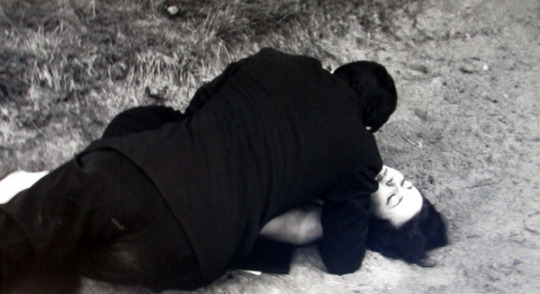
Giovanni stalks away. She follows. He sits down at the lip of a bunker. (A shot, way beyond his skills.) Soon both of them are at the lip. Soon both of them admit they lacked adult resolve. Lidia has brought in her purse a sheet of paper she might have carried for many days. This was the day: “When I awoke this morning you were still asleep. As I slowly emerged from my slumber, I heard your gentle breathing, and through the wisps of hair over your face I saw your closed eyes and I was certain of my emotion. I wanted to cry out, to wake you up, because you slept so deeply, you almost seemed lifeless. [Ironies abounding.] In the half-life, the skin of your arms and throat, so vivid, so warm that I long to press my lips against it, but the thought of disturbing your sleep, of having you awake in my arms held me back…” There is more, unfortunately. But we don’t need the full doggerel. One more time!: “At that moment I understood how much I loved you. Lidia, and the eternity of the emotion was such… etcetera.”
About mid-disaster, the supposed novelist became stern. By the end, he was ready to condemn the enterprise in the strongest language. “Who wrote that?” he sneered./ “You did…” And yet, Guerra has much more in store. Lidia kisses his hand. There is a weak caress; and the embarrassed writer (having, during the night, quit the work he never came close to what Thomas did), somewhat pounced upon Lidia, in a form, much more than dominance than affection. While being manhandled in the sands, she calls out, “No… I don’t love you anymore! And you don’t love me either!” This elicits from him, “Be quiet.” / “Say it!” she demands. / “No, I won’t say it!”
The camera draws back in stages. Then it pans away from them altogether. What it doesn’t show is that there is a modest withdrawal from the heavily tainted story and the heavily tainted discoveries which Lidia, the patrician softy, had done her, not all so bad, best. Here she becomes a potpourri. She becomes a figure of pathos, while also maintaining a figure of bathos. Keep trying. You’re not alone.
0 notes
Text
The Suicide Squad: James Gunn Talks the Creative Freedom of That R-Rating
https://ift.tt/eA8V8J
A couple of days. That’s how long director James Gunn had to wait before Warner Bros. and DC came calling in 2018. Up until that moment, it’d been a pretty turbulent July. The iconoclastic filmmaker who made audiences cry over a talking tree in Guardians of the Galaxy was just fired by Disney—temporarily as it turns out—and his name was being besmirched on social media. Yet less than 72 hours after that dismissal, WB was making him an offer that could change the face of DC superhero movies forever.
“It happened immediately,” Gunn says with a hint of lingering chagrin. “We started talking about what the project would be. The first thing that was brought up was Superman, but I didn’t know if I wanted to do that.”
So the studio suggested a once-in-a-lifetime alternative: make whatever you want. Gunn was free to adapt “anybody out of the DC catalogue.” Somehow though, with an entire gleaming multiverse at his disposal, Gunn only had eyes for the filthiest D-listers this side of Krypton. He only wanted to make The Suicide Squad.
The team of supervillain rejects has of course been adapted before, with David Ayer’s divisive Suicide Squad coming out in 2016. The earlier movie was a hit too, grossing more than $700 million and triggering a small bout of jealousy in Gunn, who even then thought that was the only DC property he ever wanted to do. But the film left something to be desired for many fans and critics.
To be clear, there are things Gunn absolutely loves about Ayer’s movie. How could he not, when he incorporated so many of the 2016 film’s cast into his own? In Gunn’s mind, Margot Robbie was born to play Harley Quinn, which he hopes to only further highlight by bringing out her “true lunacy” in the new movie. Viola Davis’s Amanda Waller, meanwhile, was the first character he decided to put in his own film. But Gunn is unambiguous on one point: his The Suicide Squad is going to be its own 31 flavors of weird.
“It wasn’t something to contrast the first movie,” Gunn says. “It wasn’t about going through a checklist of this is good, this is bad, this works, this doesn’t… but the concept that John Ostrander started with in the comics, that these are B-grade, shitty superheroes who are considered disposable by the U.S. government and are sent out on these black-ops missions, where they probably won’t make it but who gives a shit because they’re pieces-of-shit prisoners without many skills?”
That is the movie Gunn wanted to make. And he did so with R-rated glee.
Engineered as a standalone epic that might (or might not) be a sequel to the 2016 movie, Gunn’s The Suicide Squad is, in essence, meant to be a spiritual continuation of comic book writer Ostrander’s seminal 1980s run with the team. Davis’ Waller is still the government’s shady lady pulling the strings and recruiting incarcerated sad sacks to do the wet work law enforcement won’t; her point man on the ground remains Rick Flag (Joel Kinnaman), a straight arrow surrounded by coerced supervillains, including familiar faces like Robbie’s delightfully demented Harley, plus new ones such as Idris Elba’s Bloodsport.
The genre Gunn and his cohorts compare this to is war movies, but who they’re going to war against isn’t exactly clear. With that said, recent marketing revealed a comic book deep cut, with the 1950s space alien, Starro, running amok at kaiju-size.
“Starro is hilarious because he’s ridiculous. He’s a giant, cerulean blue starfish, but he’s also fucking terrifying,” Gunn says. “When I was a kid I thought that was the scariest thing of all time… and I think that exemplifies what this movie is: it is ridiculous and it’s also terrifying, and serious. So he works really well as the villain of the movie—as one of the villains, actually.”
Ironically, the real antagonists of The Suicide Squad might simply be the flick’s main characters, and Gunn is using the motley crew to unleash his distinctive voice. With an absurdly large cast to pick from, the director has carte blanche from WB to kill any character he wants, and to embrace any level of weirdness. And unlike the 2016 film, or his previous Guardians movies, The Suicide Squad is a big budget superhero flick with an R-rating. A first for Gunn.
“Most of my movies have been R-rated,” Gunn laughs when we mention this. He is, after all, a filmmaker who cut his teeth at indie grindhouse distributor Troma Studios, and has a history with tongue-in-cheek horror movies like Slither. But whether it’s making an R-rated Suicide Squad movie or a PG-13 Guardians picture, it’s all the same to him: telling the biggest-ass version of a campfire yarn.
“This is simply a little bit of a higher age bracket,” he explains, “and my audience is a little bit different. They can see a shark tearing someone in half, they can see a penis. It doesn’t matter.” Even so, there remains a sense of human connection among a number of broken Squad members. And those without that vulnerability still allow the storyteller to broaden the moral spectrum he’s playing with.
“I think you know from the beginning of the first Guardians that most likely, in his heart, Peter Quill is good, Gamora is good, Rocket is good, Drax is good.” But with the Suicide Squad, “some are not good people. They’re bad people. It’s less sentimental in that way. King Shark is much less sentimental than Groot.”
And some of these bad people will die in presumably horrible ways. Not that Gunn is killing his darlings lightly.
“The first thing I had to do was ignore the potential blowback from killing a character,” Gunn says. Instead he focused on following the natural progression of the story, and the natural progression of a character’s arc. “I’m just the servant of the story, so whatever the story says is what I’m going to do, no matter what the repercussions are for anything. I believe in the truth of the story. I believe that there was a story out there that needed to be told that I don’t have any control over.”
Perhaps ceding that control is the greatest advantage he’s discovered from making a gross, foul-mouthed superhero movie exactly to his liking.
“I wanted to do the things that other spectacle films haven’t been able to do,” Gunn says, “which is really take my time and investigate these characters, get to know them, focus on the character aspects, focus on who they were, and deal with time in a different way than it’s been dealt with in these movies.”
Gunn is thus able to let his movie breathe in a way that’s unusual for the superhero genre, but is in line with the more adult-oriented filmmaking he loved as a child. The Suicide Squad may be a war movie, but for Gunn it’s a specific type of throwback. Quick to name The Dirty Dozen and The Great Escape, he becomes audibly excited when discussing those 1960s “war-caper” films from his youth. Recapturing that men-and-women-on-a-mission aesthetic is as much the appeal of the movie as honoring Ostrander’s comics. He even refers to Elba’s Bloodsport as his Steve McQueen.
“He’s the unsentimental portrayal of a 1960s action hero but without the moral repercussions of those characters,” says Gunn. Also, he notes, Bloodsport is the guy who shot Superman with a kryptonite bullet. “How cool is that? And also, what a dick!” When contrasted with Robbie’s Harley Quinn, Gunn even likens the pair’s energy to an Abbott and Costello routine, only now Costello might kill you with a bat.
But then, each of the Squad members represent their own genre. They also each leave the door open for further exploration. Hence Gunn’s next project is still not Guardians 3, but rather an HBO Max TV series starring one of the nastiest pieces of work in The Suicide Squad: John Cena’s Peacemaker.
Describing the jingoistic flag-waver as if Marvel’s Captain America took a really far-right turn, Gunn saw Peacemaker as the perfect jumping off point when HBO approached him about doing a series.
“I think that the actual inspiration for Peacemaker was the shitty 1970s Captain America TV shows that I loved when I was a child,” Gunn says. “And I think Peacemaker exemplifies a lot of things about society that are going on politically, and what people’s beliefs are about America and the world. So being able to tell those stories that are slightly more socially conscious in their essence, but also outlandish, he lends itself to that.”
Exploring this week-to-week with Cena—an actor whose range Gunn believes audiences have only seen a fraction of—is irresistible. In fact, Peacemaker might mark another significant turning point in Gunn’s career.
Says the filmmaker, “I love doing Peacemaker. I could see just making TV shows after Guardians 3. It’s a possibility.”
Three years since Gunn’s one very bad week, the possibilities now seem limitless.
cnx.cmd.push(function() { cnx({ playerId: "106e33c0-3911-473c-b599-b1426db57530", }).render("0270c398a82f44f49c23c16122516796"); });
The Suicide Squad opens on Aug. 6 in theaters and HBO Max. We’ll have more from our interview with James Gunn in the coming weeks.
Check out more on The Suicide Squad in the latest issue of Den of Geek!
The post The Suicide Squad: James Gunn Talks the Creative Freedom of That R-Rating appeared first on Den of Geek.
from Den of Geek https://ift.tt/3aGIJas
1 note
·
View note
Note
Feminist film recommendations?
Hmm interesting question anon. I will list some of my personal favorites (in no particular order) hopefully you enjoy them.
1. Mad Max: Fury Road (2015)
I felt like there was fire in my veins walking out of the cinema. Not only is Charlize Theron’s Furiosa a total badass, but the best thing is that it’s not just her. To have such a range of women portrayed equally and beautifully was so uplifting. Women caring for each other, lifting each other and fighting hard for what is right. We need more of that, both in Hollywood and in life.
2. The color purple (1985)
Read this book in high school, about a sisterhood of women, all standing together against the racism and sexism that they face and somehow coming out on top. It’s an inspiring story of women coming together in the face of adversity.
3. Gone With the Wind (1939)
Scarlett was the most coveted female film role of all time. Despite the films obvious flaws as a result of the time period in which it was made, overall this is a feminist parable. Scarlett is above all else–a survivor. She never gives up, digs her heels in, rolls up her sleeves and does it. She faces adversity with admirable courage. Despite the fact that she is a terribly flawed human being, you can relate to her. She sets her mind to something and she does it, whether it’s dragging her family out of poverty or eating as much BBQ food as she damn well likes. Her flaws make her human, which adds richness to the overall story. Scarlett has inspired me to persevere at the darkest of times. When all hope seems lost, “tomorrow is another day.”
4. Erin Brockovich (2000)
I love Julia Roberts, and this movie stands out as one of her best in my opinion. A single mother, fallen on hard times, but somehow holding everything together. Making the best of a bad situation, an eternal realist. Portraying a woman as much more than she appears. She uncovers some dark secrets (chemicals leaked into the sewer systems) which led an entire community to develop terminal illness. She works tirelessly to expose those responsible and find justice for those who can’t help themselves. My favorite line is when this bitchy secretary says: “maybe we got off on the wrong foot here.”“Yeah lady because that’s all you got, two wrong feet and fucking ugly shoes.” Bahahaha
5. Suffragette (2015)
Tells the story of the women’s right movement at the turn of the last century. It taught me to stand up for myself, and for women everywhere. Very proud to have that as a part of our history. Incredibly grateful to all the women who fought tirelessly, endured persecution, humiliation, incarceration to ensure my right to vote.
6. Pocahontas (1995)
Pocahontas is VERY loosely based on the true story. Disney took a lot of liberties here which mask the horror of early American history and its impact on the native Americans. HOWEVER, what I like about her characterization in this film… Is that she was strong, rebellious, bold, adventurous, and wise. She went wherever the wind took her, a true free spirit. She was graceful, and kind in ways other Disney princesses were not. The purity of her heart and the message she had to bring, stopped a war. She is a warrior, but not one that fights with weapons, she fights with love. In the end she chose herself and her duty to her people over a man. I wanted to be just like her when I was a little girl watching this in the theater, and she still inspires me today, nearly 20 years later.
7. Fried green tomatoes (1992)
I watched this film when I was in high school, with low expectations and was very surprised to discover how moved I was. A story of two women, finding empowerment within oneself. The main character listens to a story from an elderly woman and learns how to love herself. I believe it’s important to encourage other women and learn from each other.
8. Obvious child (2014)
Jenny Slate’s character has an abortion after a one night stand with a guy she actually really likes. However, she knows she isn’t prepared for it and chooses to terminate the pregnancy. There’s great friendship and family in the film and it really helps to destigmatise abortion.
9. Wild (2014)
The book is arguably better, but the film is worth watching. A woman goes out and hikes one of the worlds longest trails, on a mission to find herself and to prove that she can finish what she starts. Finding herself on the elements, and getting clarity. Very freeing and inspiring.
10. Kill Bill 1 & 2 (2003)
Uma Thurman is a boss, and everyone knows it. She is so vice tally connected to her inner life as an actress, always enjoy watching her. These films are what she is most known for nowadays, and for good reason. It’s a story of revenge. A woman is almost murdered by the man she loved, pregnant with his child. Wakes up in a hospital, having been in a coma for years. Suffered all kinds of indignities, she willed herself to walk again. Dragged herself by her fingernails until she could rise up, strengthen her skills as a warrior, and set out to settle old scores. She takes each person down one by one, yet you still find the humanity behind each character and the reasons why they did what they did and became who they were. It’s about survival, perseverance, and ultimately in the end–forgiveness. Leaving the past behind, to start over again.
11. She’s beautiful when she’s angry (2014)
It’s a documentary about the feminist movement in the 1960s and 1970s, with interviews with many of the women who were part of it. Sure, it makes you angry to see injustice, but it’s also highly uplifting to see what these women did, and how it paved the way for equality forty to fifty years later. These women were, and still are, amazing figures who haven’t stopped fighting.
12. How to make an American quilt
A group of older women reflecting on their lives around a quilting table. Each of their stories are so inspiring, and the way they all come together to heal from their traumas is very powerful. Winona Ryder’s character (Finn) is experiencing a late twenties crisis of identity, and is unsure about wether or not to get married to her long term fiancée. Listening to the lives of all these women helps bring perspective and clarity to her. Life is never black and white, life is like a quilt. You build as you go along.
13. Frida
This Selma Hayek-fronted, Academy Award-winning biopic of the feminist icon portrays the artist in a whole new light. It’s amazing to watch the story of any incredible historic figure succeed against the odds, but double if said figure is also a woman and shot so beautifully by Julie Taymor.
14. The hours (2002)
This film follows three women as their lives weave in and around the narrative of Virginia Woolf’s Mrs. Dalloway. The multi-generational movie shows how people are connected through time by similar angst, anxieties, and personal struggles.
15. The Stepford wives (1975)
What happens to women when things are too perfect? The answer might make their husbands happy, but the truth behind what is happening in this ideal-seeming suburb is nothing short of horrifying.
16. Miss Representation (2011)
A documentary on the way women are treated and portrayed in the media, this film broke open the truth behind the images women and young girls are force fed on a daily basis. Start your watching here, if you can, and then continue on to these other films to see how much has and hasn’t changed.
17. North Country (2005)
A fictionalized account of the first majorly successful sexual harassment case in the United States, this film follows the female miners who fought for their right to work without suffering the abuse their male coworkers heaped on them because of their gender.
18. The Headless Woman, Lucrecia Martel
New Argentine Cinema figure Lucrecia Martel draws connections to the country’s dark political/class struggles, transposing its “disappeared” from the mid-to-late ‘70s into a sedate, challenging story about a woman’s fractured state following a fatal accident and its ensuing cover-up.
18. Princess Mononoke, Hayao Miyazaki
A thread of feminism weaves itself through the work of Hayao Miyazaki. Perhaps his most mature film, Princess Mononoke features a memorable and tenacious heroine, San, who subverts feminine stereotypes and is written without the fanciful quirks commonly found in animation. She is serious and single minded. Grounded to the earth, living in the moment. She is totally present, and pure. Even her rage comes from a pure unadulterated place. Wolf-goddess character Moro deserves attention as an unlikely mother figure that is fierce and, well, totally pissed off (you would be too if people were destroying your home), but also wise and nurturing. Fighting for what’s right, against impossible odds. Being humbled by nature, the ultimate female reclamation. So many layers in this film.
19. Dogfight, Nancy Savoca
A rare film set during the Vietnam War and told from the perspective of a woman, Nancy Savoca’s Dogfight reveals a different kind of cruelty people inflict upon one another, off the battlefield — in this case, a group of misogynistic Marines using women in a contest of looks. Lili Taylor’s peace-loving Rose, who becomes one of the targets in this game, soon realizes she’s being courted by River Phoenix’s Eddie for the wrong reasons — though his guilt and seemingly genuine interest in Rose is apparent. Rose confronts Eddie about the game, defending the honor of all women involved, which winds up bringing them closer together.
20. Alien, Ridley Scott
She’s not a sidekick, arm candy, or a damsel to be rescued. She isn’t a fantasy version of a woman. The character is strong enough to survive multiple screenwriters. She was lucky enough to be played by Sigourney Weaver,” said Science Fiction and Fantasy Writers of America President John Scalzi of Ellen Ripley from 1979’s Alien. Defying genre cinema’s gender clichés (she is gender neutral, really) as the clear-minded, intelligent, and capable officer of the ship Nostromo, Ripley is more resourceful than the men who employ her and steps in to take over when all hell breaks loose.
21. Orlando, Sally Potter
Our own Judy Berman recently highlighted Tilda Swinton’s performance in Potter’s adaptation of Virginia Woolf’s satirical text that explores gender and artistic subjectivity, a project that was ambitious in both form and content:
“Although it’s far more straightforward a narrative than most of her work, Virginia Woolf’s Orlando still presents one major challenge for the big screen: its protagonist is a nobleman in Elizabethan England who lives a life that spans centuries, and is suddenly transformed into a woman midway through it. Tilda Swinton may be the only (allegedly) human actor equipped to play the role of such a regal, mysterious androgyne, and her performance in this adaptation — also a breakthrough for director Sally Potter — became her signature.”
22. The Umbrellas of Cherbourg, Jacques Demy
Celebrated for its vivid milieu, Jacques Demy’s sensitively characterized film is a superior look at an independent woman (Catherine Deneuve) in a romantic narrative who makes difficult choices about marriage, children, and survival that sometimes leave her alone — but she is never lonely because of that.
23. Daisies, Vera Chytilová
The young women in Vera Chytilová’s Czech New Wave farce “construct fluid identities for themselves, keenly aware of their sexuality, toying with the men who pursue them. It’s an exhilarating, surreal, anarchic experiment, framed by the turbulent 1960s.
24. Daughters of the Dust, Julie Dash
Julie Dash directed the first feature film by an African-American woman distributed theatrically in the United States in 1991 — a stunningly captured look at three generations of Gullah women off the coast of South Carolina and Georgia in 1902.
25. Meshes of the Afternoon, Maya Deren
The bar for avant-garde female filmmaking, born from personal experiences and anxieties. Maya Deren’s 1943 experimental classic builds its interior female perspective and constructs of selfhood through dreamlike imagery.
26. The Passion of Joan of Arc, Carl Theodor Dreyer
Critic Jonathan Rosenbaum on Carl Theodor Dreyer’s crowning achievement, released in 1928, that still painfully echoes contemporary cases of female oppression — the film’s silent context taking on an unintentional resonance:
“Carl Dreyer’s last silent, the greatest of all Joan of Arc films… . Joan is played by stage actress Renee Falconetti, and though hers is one of the key performances in the history of movies, she never made another film. (Antonin Artaud also appears in a memorable cameo.) Dreyer’s radical approach to constructing space and the slow intensity of his mobile style make this ‘difficult’ in the sense that, like all the greatest films, it reinvents the world from the ground up. It’s also painful in a way that all Dreyer’s tragedies are, but it will continue to live long after most commercial movies have vanished from memory.”
24 notes
·
View notes
Photo

Praising the First Season of Star Trek: Discovery, the Best TV Show You’re Not Watching.
Be patient. Trust our storytelling.
Critics often hear these words from showrunners and executive producers trying to stem adverse reactions to questionable choices. It certainly seemed the producers of Star Trek: Discovery were trying that same tactic, as fan ire built over a clunky first episode last September and plot twists earlier in the season which seemed to kill off valued characters while bending the nature of the Trek universe into unrecognizable shapes.
Responses like that are usually little more than artful dodges – an attempt to buy time until fans can get over their ire. But in this case, the show’s last few episodes this year, leading to a head-turning season finale Sunday on streaming service CBS All Access, have stood as powerful proof that producers knew what they were doing all along.
The biggest point of contention here has always been Trek’s overall philosophy – a spirit that began with series creator Gene Roddenberry and which has been used to unite all the various iterations of Star Trek in film and TV back to the mothership series in the late 1960s.
Roddenberry’s vision of the future was as a near-utopia when humans had conquered stuff like greed, inequality and hate. But that’s also the stuff that makes for really good TV drama. So Trek series seemed to get duller and duller as the years went on, trapped in a rigid formula that made it difficult to produce adventures as grand as a 50-year-old sci fi franchise demanded.
Then came Discovery. Its first episodes featured Sonequa Martin-Green’s character – a human raised as a Vulcan foster child, named Michael Burnham – committing treason by circumventing her captain. Then, one of the show’s highest profile stars, Michelle Yeoh, saw her character killed off in the second episode.
And we met Gabriel Lorca. Played by Harry Potter alum Jason Isaacs, Lorca is an impatient, ruthless, driven captain of the U.S.S. Discovery who seemed nothing like the kind of officers who should have been filling Trek’s Starfleet at the time.

(Left to right, Doug Jones, Sonequa Martin-Green, Jason Isaacs, Anthony Rapp, Mary Wiseman)
A few weeks ago, we found out why (hugely big spoiler coming). Lorca actually comes from a parallel universe – Trekkers call it the “mirror universe” -- where humans have built a ruthless, xenophobic imperium called the Terran Empire, aimed at subjugating all races outside their own. This place first appeared in 1967 on the classic Trek episode “Mirror, Mirror,” and has popped up in subsequent Trek TV series like Deep Space Nine and Enterprise.

(left to right, Leonard Nimoy as Mr. Spock and William Shatner as Captain Kirk in the Mirror Universe, from “Mirror, Mirror.”)
There were subtle clues. Lorca had a sensitivity to light, which turns out to be the only physical difference between folks from the Terran universe and those in the Federation’s dimension. He reacted to someone trying to wake him unexpectedly by jumping up and grabbing a phaser – a reacton you would expect from a Terran, where officers often advance by killing superiors.
The last few episodes have moved at lightspeed, as Discovery’s producers raced toward their end game. Suddenly, it was explained why Lorca seemed so un-Starfleet like; we saw the return of beloved characters like Yeoh’s Phillippa Georgiou and Wilson Cruz’s Hugh Culber (who, with Anthony Rapp’s Paul Stamets, was the first gay couple on a Trek series until another character killed him).
Fans who groused when Yeoh’s character was killed in the show’s second episode got to see her play the Terran version of Georgiou, who was empress of her universe. The change seemed to suit Yeoh better, frankly; she was much more compelling as an evil woman of action than a contemplative Starfleet officer. And Burnham’s impulsive decision to bring her into the Federation’s universe ensures that we’ll have a delicious character to savor in the show’s second season.
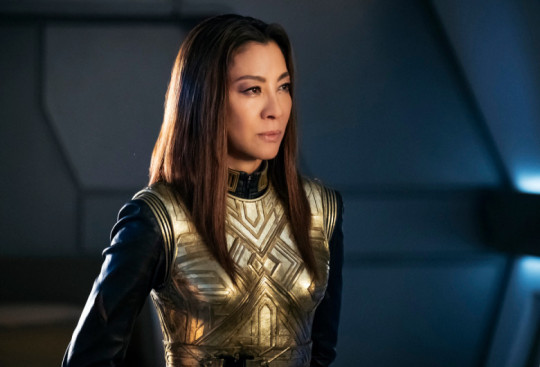
(Yeoh as the Empress of the Terran Empire)
Likewise, a storyline in Sunday’s episode where Georgiou convinces Starfleet to let her implement a secret plan to destroy the Klingon’s homeworld – decimating the species in the bargain – only reaffirmed Trek’s values when Burnham and the rest of Discovery’s crew refused to go along with the strategy. There are important lines these Starfleet officers won’t cross, and that distinction matters, as Burham and her compatriots set about building the kind of utopian Starfleet Captain Kirk and Mr. Spock will inhabit ten years later.
In the process, they answered a question the show has been asking in obvious and subtle ways since the series began: What would you do to win a brutal war? And if winning required leaving your most treasured values behind, would victory be worth it?
The trade magazine Variety pegged the show’s budget at an eye-popping $8 million to $8.5 million per episode -- and you can see every penny on screen, with high quality special effects and thoughtfully designed new versions of everything from the phaser guns to the Klingon aliens.
That has also meant most episodes of the series are only viewable on the subscription service All Access. Which is likely why the larger TV-watching public is unaware of how much ground Discovery producers are breaking in a show that took flight in the second half of its first seasone.
In fact, CBS executives made a serious error in airing just one episode of Discovery on the broadcast network when the show debuted. It was the weakest of the series’ episodes so far, and served mostly to convince curious fans who were already irritated that CBS was making them pay to see most of the program, that Discovery wasn’t really worth their time, after all.
But they were wrong. Discovery has proven, over its last few episodes, that it’s the best TV series most people aren’t watching or talking about right now.
There’s still lots of questions Discovery yet needs to answer. Burnham was supposedly raised as a ward of Vulcan ambassador Sarek, father to beloved character Mr. Spock. But somehow, Spock never made reference to a human adopted sister over nearly 50 years of TV shows and movies. They have to make some moves toward explaining that one soon.
Likewise, the Starship Discovery uses a special engine drive we’ve never seen in a previous iteration of Trek – it’s how they magically jumped into the mirror universe to begin with. Since the series takes place a decade before the era of Kirk and Spock, they’ll need to explain why we never heard of this amazing technology that can move a spacecraft to the other side of the universe in the blink of an eye.
And, of course, the season finale also introduced us to The Enterprise, which is presumably led by the guy who preceded Kirk in the captain’s chair, Christopher Pike. The biggest question: Will Burnham’s brother Mr. Spock, who was Pike’s second in command before Kirk, also be there? (probably not.)
I’m looking forward to seeing how all these discrepancies get explained in the second season. Throughout this first season, there was always a sense that producers were writing themselves into corners no sane TV writer would attempt -- Georgiou’s dead! The Discovery is in the mirror universe! Lorca’s a Terran! Now he’s dead! The Federation is losing the war with Klingons! -- and part of the fun was seeing how they navigated out of such danger zones with bravery and a deft storytelling touch.
Now that I’ve seen how the folks working on Discovery operate, I’m ready to sit back and let the stories flow, secure that answers will come in time. And they’ll be spectacular.
I guess I’ve learned to trust them, after all.
2 notes
·
View notes
Text
0 notes
Text
It’s Time to Build

Well-known technology and software expert Marc Andreessen has flourished in his field. That's why people are taking notice of what he has to say in his recent article on the need for challenging the status quo, creating, making and building for our future. Following is his recent article:
By Marc Andreessen
Every Western institution was unprepared for the coronavirus pandemic, despite many prior warnings. This monumental failure of institutional effectiveness will reverberate for the rest of the decade, but it’s not too early to ask why, and what we need to do about it.
Many of us would like to pin the cause on one political party or another, on one government or another. But the harsh reality is that it all failed — no Western country, or state, or city was prepared — and despite hard work and often extraordinary sacrifice by many people within these institutions. So the problem runs deeper than your favorite political opponent or your home nation.
Part of the problem is clearly foresight, a failure of imagination. But the other part of the problem is what we didn’t *do* in advance, and what we’re failing to do now. And that is a failure of action, and specifically our widespread inability to *build*.
We see this today with the things we urgently need but don’t have. We don’t have enough coronavirus tests, or test materials — including, amazingly, cotton swabs and common reagents. We don’t have enough ventilators, negative pressure rooms, and ICU beds. And we don’t have enough surgical masks, eye shields, and medical gowns — as I write this, New York City has put out a desperate call for rain ponchos to be used as medical gowns. Rain ponchos! In 2020! In America!
We also don’t have therapies or a vaccine — despite, again, years of advance warning about bat-borne coronaviruses. Our scientists will hopefully invent therapies and a vaccine, but then we may not have the manufacturing factories required to scale their production. And even then, we’ll see if we can deploy therapies or a vaccine fast enough to matter — it took scientists 5 years to get regulatory testing approval for the new Ebola vaccine after that scourge’s 2014 outbreak, at the cost of many lives.
In the U.S., we don’t even have the ability to get federal bailout money to the people and businesses that need it. Tens of millions of laid off workers and their families, and many millions of small businesses, are in serious trouble *right now*, and we have no direct method to transfer them money without potentially disastrous delays. A government that collects money from all its citizens and businesses each year has never built a system to distribute money to us when it’s needed most.
Why do we not have these things? Medical equipment and financial conduits involve no rocket science whatsoever. At least therapies and vaccines are hard! Making masks and transferring money are not hard. We could have these things but we chose not to — specifically we chose not to have the mechanisms, the factories, the systems to make these things. We chose not to *build*.
You don’t just see this smug complacency, this satisfaction with the status quo and the unwillingness to build, in the pandemic, or in healthcare generally. You see it throughout Western life, and specifically throughout American life.
You see it in housing and the physical footprint of our cities. We can’t build nearly enough housing in our cities with surging economic potential — which results in crazily skyrocketing housing prices in places like San Francisco, making it nearly impossible for regular people to move in and take the jobs of the future. We also can’t build the cities themselves anymore. When the producers of HBO’s “Westworld” wanted to portray the American city of the future, they didn’t film in Seattle or Los Angeles or Austin — they went to Singapore. We should have gleaming skyscrapers and spectacular living environments in all our best cities at levels way beyond what we have now; where are they?
You see it in education. We have top-end universities, yes, but with the capacity to teach only a microscopic percentage of the 4 million new 18 year olds in the U.S. each year, or the 120 million new 18 year olds in the world each year. Why not educate every 18 year old? Isn’t that the most important thing we can possibly do? Why not build a far larger number of universities, or scale the ones we have way up? The last major innovation in K-12 education was Montessori, which traces back to the 1960s; we’ve been doing education research that’s never reached practical deployment for 50 years since; why not build a lot more great K-12 schools using everything we now know? We know one-to-one tutoring can reliably increase education outcomes by two standard deviations (the Bloom two-sigma effect); we have the internet; why haven’t we built systems to match every young learner with an older tutor to dramatically improve student success?
You see it in manufacturing. Contrary to conventional wisdom, American manufacturing output is higher than ever, but why has so much manufacturing been offshored to places with cheaper manual labor? We know how to build highly automated factories. We know the enormous number of higher paying jobs we would create to design and build and operate those factories. We know — and we’re experiencing right now! — the strategic problem of relying on offshore manufacturing of key goods. Why aren’t we building Elon Musk’s “alien dreadnoughts” — giant, gleaming, state of the art factories producing every conceivable kind of product, at the highest possible quality and lowest possible cost — all throughout our country?
You see it in transportation. Where are the supersonic aircraft? Where are the millions of delivery drones? Where are the high speed trains, the soaring monorails, the hyperloops, and yes, the flying cars?
Is the problem money? That seems hard to believe when we have the money to wage endless wars in the Middle East and repeatedly bail out incumbent banks, airlines, and carmakers. The federal government just passed a $2 trillion coronavirus rescue package in two weeks! Is the problem capitalism? I’m with Nicholas Stern when he says that capitalism is how we take care of people we don’t know — all of these fields are highly lucrative already and should be prime stomping grounds for capitalist investment, good both for the investor and the customers who are served. Is the problem technical competence? Clearly not, or we wouldn’t have the homes and skyscrapers, schools and hospitals, cars and trains, computers and smartphones, that we already have.
The problem is desire. We need to *want* these things. The problem is inertia. We need to want these things more than we want to prevent these things. The problem is regulatory capture. We need to want new companies to build these things, even if incumbents don’t like it, even if only to force the incumbents to build these things. And the problem is will. We need to build these things.
And we need to separate the imperative to build these things from ideology and politics. Both sides need to contribute to building.
The right starts out in a more natural, albeit compromised, place. The right is generally pro production, but is too often corrupted by forces that hold back market-based competition and the building of things. The right must fight hard against crony capitalism, regulatory capture, ossified oligopolies, risk-inducing offshoring, and investor-friendly buybacks in lieu of customer-friendly (and, over a longer period of time, even more investor-friendly) innovation.
It’s time for full-throated, unapologetic, uncompromised political support from the right for aggressive investment in new products, in new industries, in new factories, in new science, in big leaps forward.
The left starts out with a stronger bias toward the public sector in many of these areas. To which I say, prove the superior model! Demonstrate that the public sector can build better hospitals, better schools, better transportation, better cities, better housing. Stop trying to protect the old, the entrenched, the irrelevant; commit the public sector fully to the future. Milton Friedman once said the great public sector mistake is to judge policies and programs by their intentions rather than their results. Instead of taking that as an insult, take it as a challenge — build new things and show the results!
Show that new models of public sector healthcare can be inexpensive and effective — how about starting with the VA? When the next coronavirus comes along, blow us away! Even private universities like Harvard are lavished with public funding; why can’t 100,000 or 1 million students a year attend Harvard? Why shouldn’t regulators and taxpayers demand that Harvard build? Solve the climate crisis by building — energy experts say that all carbon-based electrical power generation on the planet could be replaced by a few thousand new zero-emission nuclear reactors, so let’s build those. Maybe we can start with 10 new reactors? Then 100? Then the rest?
In fact, I think building is how we reboot the American dream. The things we build in huge quantities, like computers and TVs, drop rapidly in price. The things we don’t, like housing, schools, and hospitals, skyrocket in price. What’s the American dream? The opportunity to have a home of your own, and a family you can provide for. We need to break the rapidly escalating price curves for housing, education, and healthcare, to make sure that every American can realize the dream, and the only way to do that is to build.
Building isn’t easy, or we’d already be doing all this. We need to demand more of our political leaders, of our CEOs, our entrepreneurs, our investors. We need to demand more of our culture, of our society. And we need to demand more from one another. We’re all necessary, and we can all contribute, to building.
Every step of the way, to everyone around us, we should be asking the question, what are you building? What are you building directly, or helping other people to build, or teaching other people to build, or taking care of people who are building? If the work you’re doing isn’t either leading to something being built or taking care of people directly, we’ve failed you, and we need to get you into a position, an occupation, a career where you can contribute to building. There are always outstanding people in even the most broken systems — we need to get all the talent we can on the biggest problems we have, and on building the answers to those problems.
I expect this essay to be the target of criticism. Here’s a modest proposal to my critics. Instead of attacking my ideas of what to build, conceive your own! What do you think we should build? There’s an excellent chance I’ll agree with you.
Our nation and our civilization were built on production, on building. Our forefathers and foremothers built roads and trains, farms and factories, then the computer, the microchip, the smartphone, and uncounted thousands of other things that we now take for granted, that are all around us, that define our lives and provide for our well-being. There is only one way to honor their legacy and to create the future we want for our own children and grandchildren, and that’s to build.1
1 https://a16z.com/2020/04/18/its-time-to-build/
0 notes
Text
PARANORMAL IN POPULAR CULTURE
“Ssshh koi hai….”remember the chills which used to run down our spines when as kids we used to sit down in front of television screens at 11:00pm to watch these shows which now might seem more funny than scary, but you will have to agree that watching horror shows and movies have been one our guilty pleasures even though it does not let us sleep at night but we still love it, it is like going back to your toxic exes, it is dreadful but you cannot resist.
What we all can agree upon is that most of the information we have today about Ghosts, Spirits, Witches comes from their representation in popular culture which basically is through movies ,theater shows and folklore. The horror genre has been there in the movies for quite some time now, with the world’s first horror movie “THE HAUNTED CASTLE” made in 1896 and first Bollywood horror movie “MAHAL” made in 1946 which surely was long back and from then horror movies have been gaining popularity.
Our mothers have always been warning us to avoid watching horror movies since they were the ones who had to calm us down when we could not sleep at night after watching horror movies and our cries of “ mummy darr lag raha hai” met with “aur dekh bhoot aur chudailon wali picturein”, but did it stop us? Nahh. So here is the list of both Bollywood and Hollywood horror movies which you may like to watch for some sleepless nights:
.
MUST WATCH HORROR MOVIES IN BOLLYWOOD
1.13B
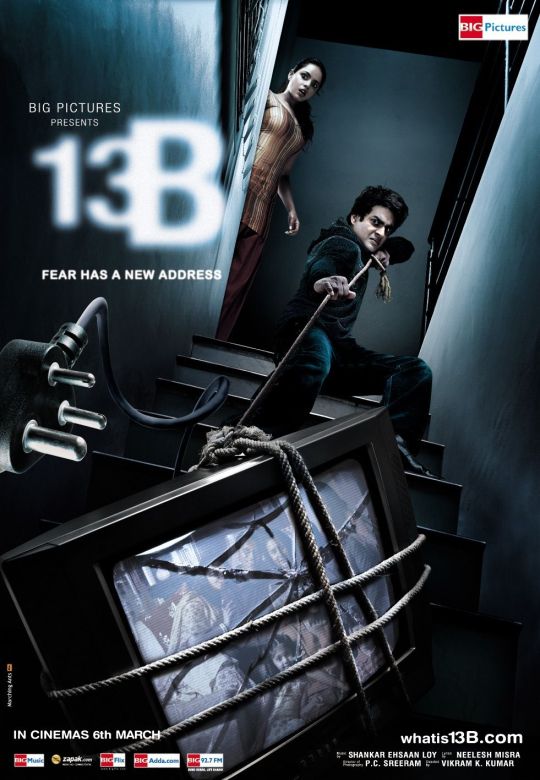
image source: click here
Yavarum Nalam titled 13B in Hindi is a 2009 bilingual (Tamil-Hindi) psychological horror film written and directed by Vikram Kumar, starring Madhavan and Neetu Chandra in the lead roles. The film revolves around a mysterious TV show that mirrors and reveals what will happen in the protagonist's family's life that day. Everything is great--lighting, sound, etc. The plot is fascinating and the unraveling of the story behind the TV serial's characters is eye-popping! The violent flashbacks and disturbed characters leaves the viewers horrified! Madhavan, as always, has given a sincere and outstanding performance! You feel terrified with him. 13B is a fine example of intellectual horror. It does not force feed the suspense, but allows the viewer to build their own overtime as the protagonist becomes aware of the unnatural forces manipulating his and his family's mentality to the breaking point
You can watch the trailer here:https://www.youtube.com/watch?v=-eWl5M-jqxs
2.Woh Kaun Thi(1964)

image source: click here
Woh Kaun Thi? is a 1964 black-and-white psychological mystery film directed by Raj Khosla, starring Sadhana Shivdasani, Manoj Kumar and Prem Chopra. The film was a hit at the box office. Woh Kaun Thi was one of the most scariest Hindi film of that time. The script is tense, interesting and twisted, at times so much that there isn't a possible solution one would offer. The writers try to lead the audience to one particular prediction, but the movie is still highly unpredictable. The movie is aided by some melodious songs composed by Madan Mohan and sung by Lata Mangeshkar. The song shayad ‘lag jaa gale phir ye haseen raat ho na ho’ is about 50 years now and has been and would always be an all time favorite forever, for all years to come. Splendid performances by Manoj & Sadhana and certainly haunting tale from Raj Khosla.
3.Mahal(1949)
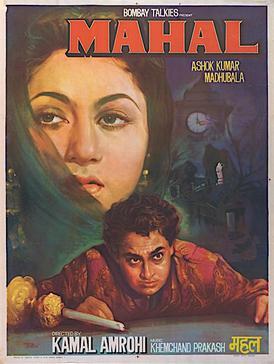
imagesource: click here
Mahal is a film directed by Kamal Amrohi and starring Ashok Kumar and Madhubala. It was India's first reincarnation thriller film. The film was included in the British Film Institute's list, "10 great romantic horror films". The movie was a groundbreaking supernatural suspense thriller and one of the earliest known films dealing with reincarnation. Mahal became one of the biggest box office hits of 1949 in India and paved way for Indian gothic fiction.
Why MAHAL was one of the most iconic Bollywood horror movie: https://www.cinestaan.com/articles/2018/jan/17/10442
4.PIZZA

image source: click here
Pizza is a 2012 Indian Tamil thriller film written and directed by debutant Karthik Subbaraj. Pizza tells you a story of a pizza-delivery guy who gets entangled in a story of horror, love and deception. The first part is a juxtaposition of initiation, life and horror. While the second half is where it gets horrid, severe and mind-blowing. The performances of the main leads was great and well maintained too. Special effects were at peaks along with the background score. The climax was great revealing all the twists and turns in the story.
5. TUMBBAD
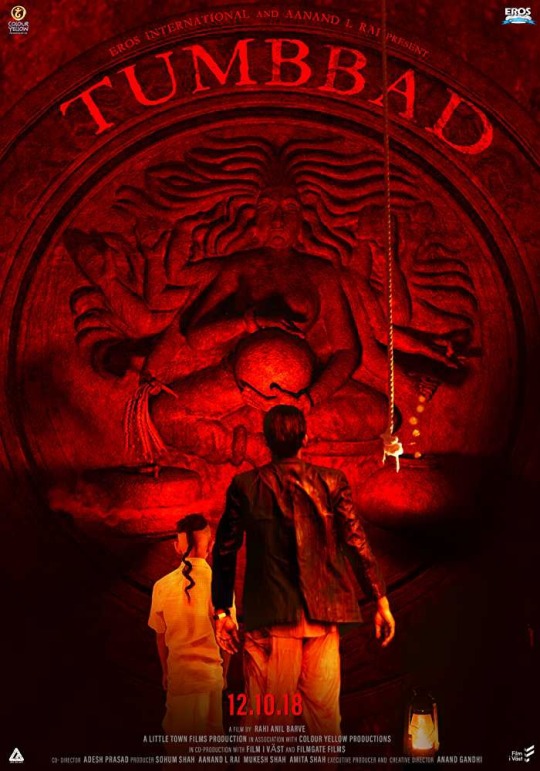
imagesource: click here
This movie has raised the standard among all the horror movies which have been produced and released in India till now. It is something our film industry never produced before. The beauty and horror of this film will stalk you and will capture your mind. The story revolves around God Hastar and his greed for wealth. This is a period film which is based on pre and post-independence period. As the movie progresses the story becomes more gripping and fascinating. There are no big faces in this movie. The actors have done their job brilliantly. There are no big actors in this movie still it made stand out among other horror movies. The score of the music is composed by none other than Ajay-Atul. They have done their job brilliantly. The background music helps the story to move in right direction and make the plot for gripping. Visuals are astonishing, stunning and marvelous which helps the movie to go with the flow.
Movie Review :https://www.youtube.com/watch?v=SBRS6lEDsaY
6.MAKDEE
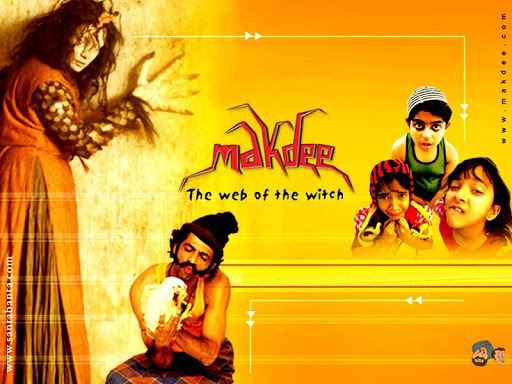
image source: click here
This is an excellent movie not only for kids but also for elders. This movie runs around two about 10 years old identical twin girls and a myth in the village. One sister in simple and the other one is naughty. The myth is about a Churhel (Evil Soul) in the village. The naughty sister teases & make fun of the other one but when the other one falls in a serious trap, the naughty one plays with her own life to save the other. This is a fun filled movie. A pure and healthy fun and also gives a good message to kids in the end. The songs are lovable. Particularly kids will enjoy the movie. The acting of the girl artist is excellent. Shabana Ajmi is there in a different role. The direction of the movie is great. A must watch for sensible cinema viewers.
MUST WATCH HOLLYWOOD HORROR MOVIES
1. Psycho(1960)

image source:click here
Released in 1960 Psycho is one of the finest films ever made and the greatest horror film of all time features dark, twisted and thrilling storytelling and masterful direction from the master of suspense Alfred Hitchcock, Psycho is now a legendary film.
A Phoenix secretary embezzles forty thousand dollars from her employer's client, goes on the run, and checks into a remote motel run by a young man under the domination of his mother.
2. The Exorcist(1973)

image source: click here
The Exorcist rides its supernatural theme to magical effect, with remarkable special effects and an eerie atmosphere, resulting in one of the scariest films of all time. With great performances and creepy moments, The Exorcist is a classic.
When a 12 year-old girl is possessed by a mysterious entity, her mother seeks the help of two priests to save her.
https://www.factinate.com/things/26-chilling-facts-exorcist/
3.The Conjuring

image source: click here
The Conjuring is a 2013 American supernatural horror film directed by James Wan and written by Chad Hayes and Carey W. Hayes. It is the inaugural film in the Conjuring Universe franchise
A very effectively mounted fright fest, played extremely straight, with very good performances. This movie is hugely enjoyable, genuinely scary horror flick. This is a horror film where a pair of suddenly clapping hands gives you the heebie-jeebies, and James Wan doesn't cheat with his jump scares.
4.ROSEMARY’S BABY

image source: click here
A frightening tale of Satanism and pregnancy that is even more disturbing than it sounds thanks to convincing and committed performances by Mia Farrow and Ruth Gordon that results in one of the finest horror movies of all time that features excellent direction and cinematography.
A young couple moves in to an apartment only to be surrounded by peculiar neighbors and occurrences. When the wife becomes mysteriously pregnant, paranoia over the safety of her unborn child begins to control her life.
5. ALIEN

image source: click here
A modern classic, Alien blends science fiction, horror and bleak poetry into a seamless whole. With claustrophobic thrills and chills and an empowering performance from Sigourney Weaver, Alien is a horror classic.
After a space merchant vessel receives an unknown transmission as a distress call, one of the crew is attacked by a mysterious life form and they soon realize that its life cycle has merely begun.
So these were some of our top picks from IMDB and would advise you to watch them at your own risk because these movies are surely not for people with weak heart(or people who close their eyes when the ghost is on screen) and please watch these movies with a huge group of friends or family and if you are one of those people who can watch such movies alone then I have nothing but respect for you.
LET THE FEAR TAKE OVER!
You can read about some spooky behind the scenes things that happened on the sets of some horror : Click here
SOURCES: one, two, three, four ,five ,six
1 note
·
View note